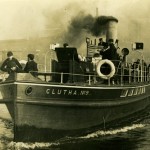 From the Broomielaw Wharves on the north bank or from Clyde Place Quay on the south bank, we begin our journey down the River Clyde, or “Doon the Watter”, as Glasgow folk would say. This will be a journey through an industrial empire, past shipyards famous for building many of the world’s greatest ships and past docks of one of the world’s greatest ports. The output of Clyde shipyards has been estimated at over 22,000 vessels and in 1876 more iron ships were built on the Clyde than in the rest of the World put together.
From the Broomielaw Wharves on the north bank or from Clyde Place Quay on the south bank, we begin our journey down the River Clyde, or “Doon the Watter”, as Glasgow folk would say. This will be a journey through an industrial empire, past shipyards famous for building many of the world’s greatest ships and past docks of one of the world’s greatest ports. The output of Clyde shipyards has been estimated at over 22,000 vessels and in 1876 more iron ships were built on the Clyde than in the rest of the World put together.
This shows the magnificent steamer T. S. S. King Edward at the Bridge Wharf circa 1936/37. Completed in 1901 at William Denny & Bros. yard at Dumbarton, and named after the new king, Edward VII, this fine vessel made history as the world’s first turbine-driven passenger steamer. Her smooth motion and turn of speed provided a marked contrast to the surging and vibration experienced on contemporary paddle steamers. She was an undoubted success and was to operate in service for fifty years. Here, she is seen partly in the livery of Williamson Buchanan Steamers with a black hull, white superstructure and with white painted funnels topped in black. However, her ventilators are probably silver in colour with light blue interiors, L.M.S. colours that were later carried over to the British Railways steamers. Passengers are gathering on board for a trip “Doon the Watter” that would take in calls at Greenock Princes Pier, Gourock, Dunoon and Rothesay before cruising into the Kyles, or up Loch Striven or possibly to Largs and around the Cumbraes. ( Postcard published by J. Salmon, Sevenoaks, Kent. Courtesy of the Graham Lappin Collection. )
We have just left the Broomielaw Wharf and the first ferry we encounter is the York Street passenger ferry seen crossing the river from the York Street landing on the north bank to the West Street landing on the south bank. The year is 1913 and the ferry service at this location would soon be discontinued. The steamers in the background are moored at Windmillcroft Quay and the signage at the end of the goods shed reads William Sloan & Company, Bristol, Cardiff, Swansea and Newport. This firm was originally established in 1825 for the transport of chemicals from the St. Rollox Chemical Works via the Forth & Clyde Canal to ports on the East Coast and London. Behind the goods shed is Kingston Dock, Glasgow’s first enclosed dock, built in 1867 and offering 823 yards of quayside initially to accommodate sailing vessels. The masts of one such vessel can be seen in this photograph. In 1914, the year after this picture was taken, there was a terrible fire at the dock which destroyed all the goods sheds and four schooners at their moorings. Only one sailing vessel managed to escape the inferno. The fire was accidentally started by some contractors who were drilling into the creosote-treated wooden piling with a hot bore. The large domed building on the right skyline houses the offices and warehouse facility of the Scottish Co-operative Wholesale Society (SCWS) on Morrison Street. ( Co-operative Wholesale Societies or Co-ops were set up as member-owned organizations to buy food in bulk and sell it to the membership at discounted prices. Profits are shared out between the members in the form of a dividend, based upon how much they spend. ) ( Postcard published by Judges, Ltd., Hastings. )
In this scene, taken around the turn of the century, a Clutha is heading down river, having left the Glasgow Bridge ( Jamaica Street ) landing stage. The York Street cross-river ferry is approaching its landing on the north bank and two G. & J. Burns steamships, the Gorilla ( left ) and the Hare are at the quayside. The Hare may be about to depart for Belfast. Part of York Street is just visible on the left of the picture as it joins the Broomielaw. The tall tower in the centre of the view is still present today in the block between Robertson Street and Oswald Street although the pointed top has gone.
A Clutha river ferry is heading down river, passing a line of coastal steamers moored at Windmillcroft Quay. Several Sloan Steamers, whose funnels are black with a white band, are clustered together at the far end of the quay. The building on the right overlooks Kingston Dock. ( Photograph courtesy of the Graham Lappin Collection. )
Kingston Dock is clearly visible in this photo, taken in 1956-58 and showing the swing bridge in the open position at the dock entrance. The MV Denbigh Coast is making its way slowly upriver and a Sloan steamer is moored at Windmillcroft Quay. Shipping is now thinning out on the Clyde, fewer coastal vessels were in service and the Sloan steamers were no longer crowded together at the far eastern end of the quay. More goods were being transported by road and rail, and those destined for Ireland were more likely to be conveyed over the short sea routes. Kingston Dock was closed in 1966 to allow construction to begin on the Kingston Bridge and the dock basin was subsequently filled in and housing built on the reclaimed land. ( Photograph courtesy of the Bobby Sinclair Collection. )
The steamers in full view in this early 1930’s scene are the Lairdsloch on the left and the Lairdsglen (1) on the right, both ships having now become part of the amalgamated Burns & Laird fleet. The tower of the Sailors’ Home is not visible in the background so we are a several blocks west of James Watt Street and close to Anderston Quay opposite the entrance to Kingston Dock. The sign on the Eastmans building in the foreground is advertising Beefex stock cubes. ( Photograph courtesy of the Graham Lappin Collection. )
We are now looking downstream as the river takes a gradual bend to the right beginning just west of Windmillcroft Quay and continuing all the way to Finnieston Quay and Stobcross. Two Clutha river ferries are in the foreground; one has just left the Springfield Lane landing stage and the other is shortly to arrive. Across the river, three steamers operating the service to Londonderry, Belfast and Dublin are moored at Anderston Quay. They had very characteristic funnel colours consisting of a broad band of white with red above and capped off with black. A few years later, in 1907, these vessels would be incorporated into the Laird Line. ( Published by W.H., Berlin. )
This view shows three vessels of the Glasgow, Dublin & Londonderry Steam Packet Co. moored at Anderston Quay, circa 1905. Their unique funnel colours of white, red, and black can now be clearly discerned. In the foreground, the Clyde Street ferry is crossing the river from Springfield Quay on the south side to the Clyde Street landing in Anderston. ( Postcard publisher unknown. )
This atmospheric scene, captured in 1913, is looking down river from Anderston Quay on the north bank where a Laird Line steamer is berthed and people are boarding. Another Laird Line vessel is moored in midstream and beyond it is a curious tower which may be part of the Hydraulic Pumping Station at the General Terminus Quay. The first part of this complex opened in December 1848 and it was to here that coal was brought by train from coalfields in Ayrshire and Lanarkshire and readied for shipment. The quayside would become a fan-shaped mass of railway sidings. In this photo, a few cranes are in use but after the First World War, two coal conveyors were built to speed up the process of loading the colliers. Further down river, a tea/cotton clipper is moored in midstream. The building on the skyline is in Govan. ( Postcard published by Judges, Ltd., Hastings. Courtesy of the Graham Lappin Collection. )
This photograph, taken around 1890 from the western part of General Terminus Quay, is looking across river to Anderston and the MacBrayne steamer Iona. Completed in 1864, the Iona would be with MacBrayne’s for a total of 72 years and become the longest-serving Clyde steamer. She was actually the third steamer to bear the name, her two predecessors having been sold as blockade runners to the American Confederacy and lost early en route. On the left of the picture is a dredger, essential for ensuring the navigability of the waterway. The General Terminus Quayside on the right is equipped with a line of steam cranes used for loading coal into waiting ships. ( Photograph courtesy of the Graham Lappin Collection. )
After we pass Anderston Quay and Hydepark Quay on the north bank of the river, we come to Lancefield Quay which is pictured here sometime in the second half of 1852, making this one of the oldest photographs of Glasgow Harbour. The paddle steamer moored at the quayside has been identified as the P.S. Arabia, built for the Cunard Steam Ship Company by Robert Steele & Company of Greenock and engined by Robert Napier. She was launched on 21st June, 1852 and then towed from Greenock upriver to Robert Napier’s facility at Lancefield Quay where the engines and boilers would be installed. The ship when completed had two funnels but in this photograph she has only one. The presence of the tripod shear legs on the Lancefield quayside would suggest that the ship could be fitted out there and once the engines and boilers had been installed and the engine room closed off, the second funnel would be added. An article published in the Glasgow Herald on Monday 13th December 1852 reported the successful sea trial of the Arabia on the previous Saturday and that the steamship would now proceed immediately to Liverpool from whence she would sail with the mails to the United States on 1st January, 1853.
In the 1950’s when this photograph was taken, Vehicular Ferryboat No. 3 was providing the cross-river service between Elliot Street in Finnieston and the western end of the General Terminus Quay. The somewhat ungainly appearance of these vehicular ferries is explained by the fact that they were essentially large floating lifts. The vehicle deck could be raised or lowered according to the tidal level at fixed docking points. This was not an issue for the early Clutha river ferries because their landing stages were floating. While sailing “Doon the Watter” it was fascinating to see the cross-river ferries scurrying back and forth across the path of the approaching steamer. The large cantilever crane in the distance, officially known as the Stobcross crane but popularly referred to as the Finnieston crane, was completed in 1932 for the purpose of loading heavy cargo. It survives to this day and is a Category A listed structure. ( Photograph courtesy of the Crawford Alexander Collection. )
We are now at the location of the giant Stobcross crane which stands 165 feet tall, has a jib of 253 feet and is capable of lifting loads up to 175 tons. It is about to load steam locomotives built in Glasgow into the hold of the freighter S. S. Baron Ruthven. Of the 50 cantilever cranes built worldwide, six were located on Clydeside and four of those survive to this day. The circular building near the crane is the North Rotunda, housing the lift access to the Harbour Tunnel which opened in 1895. A similar building was constructed on the south bank and the elevators were installed by the renowned Otis Company of New York. The Harbour Tunnel actually comprised three 16 ft diameter tunnels running in parallel under the Clyde, the centre one being for pedestrians and the outer ones for horse and cart traffic. It seems that the horses adapted quite well to the lifts and the tunnel. In 1986, the vehicular tunnels were filled in but the pedestrian tunnel is still in use to access water mains.
This view, taken around 1900, shows the Stobcross ferry landings on the left and Finnieston Quay on the right with the original Finnieston crane which had been installed in the 1890’s and was capable of lifting loads of up to 130 tons. The ferry in midstream, crossing from Mavisbank Quay, was the predecessor of Vehicular Ferryboat No. 3 shown earlier, a short distance upriver, and also shown below. At Stobcross, there were landings for each of the three ferry types; the vehicular cross-river ferry, the passenger cross-river ferry and the Cluthas. The cross-river passenger ferry can be seen at the far left of the picture. The tower on the quayside may have been a signal tower and now appears disused. At the end of November 1903, the Clutha service closed down and the Stobcross quayside was ultimately redeveloped and the giant cantilever crane constructed. In the mid-1930’s, there was a plan to build a bridge across the river at Finnieston and so the cross-river ferry service was relocated upstream to new docking points but the proposed bridge was never built. ( Photograph courtesy of the Graham Lappin Collection. )
Here is a close-up view of D.T.S.S. “Finnieston No. 1”/” Vehicular Ferryboat No. 3” at its docking station on Mavisbank Quay circa 1910. This ferry entered service in 1908 and continued until late 1965. In the background, a powerful crane is visible on Stobcross Quay. Interestingly, this crane is not included in the usual list of heavy lift cranes present in Glasgow Harbour at the time. The funnels in the background are of vessels in the South Basin of Queen’s Dock, one of which is with the Harrison Line. ( Postcard published by Mills of Govan and reproduced courtesy of Graham Lappin. )
The next quay downriver from the General Terminus Quay is Mavisbank Quay and this photograph was taken from that location, looking upstream around 1870. While sailing ships still represented the bulk of traffic on the river, steamships were steadily growing in number and in the foreground are two David Hutcheson & Company (later David MacBrayne) steamers; the Chevalier (built 1866) on the left and the Mountaineer (1852) on the right. When new, the Mountaineer achieved a speed of 15 knots on trial and was allegedly the faster steamer in Europe at the time. Although separated by only 14 years, the difference in design between the two vessels is striking, with the inclusion of deck saloons and a promenade deck on the Chevalier. Not only were great strides being made in design, Clyde shipbuilders were also in the forefront of marine engineering.
In this view, we are looking downstream with Plantation Quay on the left and Stobcross Quay on the right. The elegant three-funnelled liner is the S. S. Columbia, built in 1902 for the Anchor Line by D. & W. Henderson Ltd. of Meadowside, to replace the City of Rome on the Glasgow – New York route. The City of Rome herself was a magnificent vessel, a cross between a schooner and a steamship, with three funnels and four sail-bearing masts. Not long after this picture was taken, a serious fire occurred at Stobcross Quay in November 1903, destroying the Anchor Line’s facilities there. This, together with the increasing size of the liners, may have been why they were subsequently moved to the eastern end of Yorkhill Quay. Further down Stobcross Quay is the hulk of a large sailing vessel and on the other side of the goods sheds is shipping in Queen’s Dock. ( Postcard published by M. Wane & Co. Edinbro. )
This scene, photographed from Plantation Quay in 1903, shows the MacBrayne’s steamer Lovedale heading downriver en route to Islay. She is passing Stobcross Quay on her starboard side, behind which is Queen’s Dock. Many quaysides were still surfaced with cobblestones at the time, as shown in this picture. The tall jib of the heavy lift steam crane at Finnieston is visible in the distance. ( Postcard courtesy of the Crawford Alexander Collection. )
Here, we are looking across the river to vessels moored at Plantation Quay in the late 1950’s. Nearest the camera is the M.V. Pinto, operated by Andrew Weir & Co. Ltd., a ship management company that is still in business today. In the adjacent berth is the M.V. Harapangi, a refrigerated cargo vessel owned by the New Zealand Shipping Co. Ltd. Refrigerated cargo ships operated by several companies would berth at Plantation Quay. On the other side of the sheds is Prince’s Dock and if we look downriver, there are ships undergoing maintenance in the Govan Dry Docks. ( Postcard published by Photochrom. )
The first heavy lift crane to be installed in Glasgow Harbour was the Clyde Villa crane at the western end of Plantation Quay. Capable of lifting up to 60 tons, the crane is shown here loading railway locomotives built by the North British Locomotive Company onto a freighter for export.
Here is another view of the Clyde Villa crane loading railway locomotives, in this case tank engines, onto a waiting freighter.
The Queen’s Dock
As the 19th Century progressed and commerce though Glasgow increased, it became apparent that the existing quays on the river would be insufficient to accommodate the larger and more numerous ships using the port. Plans were therefore drawn up for a new dock and quays to be constructed at Stobcross. The Clyde Navigation Trust was fortunate to have James Deas as its Chief Engineer at that time and work on the new dock began in 1872 with the construction of the foundations consisting of concrete cylinders made up from pre-cast concrete rings. These cylinders were sunk into the ground partly through excavation and also by placing heavy cast iron weights on top of them. Once in position, they were filled with concrete and the dock walls could then be built.
The partially completed Stobcross Dock was formally opened by Lord Provost Sir James Bain on 18 September, 1877 when he announced that Queen Victoria had given her consent for it to be renamed the Queen’s Dock in her honour, subsequently abbreviated to Queen’s Dock. The first vessel to enter was, appropriately, the Anchor Line’s S. S. Victoria. Work on the completing dock continued and the final coping stone was laid by Lord Provost Sir William Collins on 2 March 1880.
The Queen’s Dock had a central pier separating the North and South Basins and afforded a total quay space of nearly 2 miles. An Italianate hydraulic power and pumping station designed by John Carrick, the City Architect, was built at the entrance in 1877-8 and it contained a large steam engine, together with boilers and a hydraulic accumulator able to supply high pressure water to operate the swing bridge at the dock entrance and the cranes and capstans.
This is an early photograph of the entrance to Queen’s Dock at Stobcross and it shows the Italianate hydraulic power and pumping station, and the swing bridge. ( Caledonia Series postcard. Courtesy of the Graham Lappin Collection. )
Sailing vessels are moored at the short West Quay, just inside the entrance to Queen’s Dock. The swing bridge would be to the left of this picture. There are railway sidings on the quayside and beyond is a high wall with Pointhouse Road at its foot. More railway traffic is visible above the wall, on sidings beside the North British line running from Queen Street Station along the north bank of the river. ( Photograph by Robert Marshall. Courtesy of the Graham Lappin Collection. )
This photograph, taken around 1913 from the North Quay of Queen’s Dock, shows a clipper ship moored in the Outer Basin. Although steam power was now well-established, large sailing ships were still employed on the long sea routes to Australia, carrying cargoes of manufactured goods out and bringing back wool. The two cranes on the quayside were specially designed to lift and tip coal wagons. These cranes would rotate upon fixed plinths and convey coal wagons from the railway sidings over to the quayside where they would be tipped up and their contents emptied into the hold of a waiting vessel. In the foreground, one of these cranes is loading coal into a puffer. The tower of the hydraulic pumping station near the dock entrance is visible in the background and to the right in the distance are two funnels and part of the superstructure of an Anchor liner moored at Yorkhill Quay. The size of this vessel clearly dwarfs the other steamships in the photograph. It seems hard to believe that ocean liners could come this close to the centre of Glasgow but they did. ( Postcard published by Judges Ltd., Hastings.)
A group of dockworkers is pictured on the North Quay of Queen’s Dock in 1908, waiting for an assignment. It cannot have been very comfortable sitting on a pile of granite setts. Apart from pipe smoking and the occasional rich conversation there would not have been much to occupy the workers until a vessel needed service. The location for this scene is approximately halfway along the North Quay and east of the main coaling station shown in the previous photograph. ( Stereo view by Stereo-Travel Co., Corona, New York City. Courtesy of the Graham Lappin Collection. )
We are continuing eastward along the North Quay and now have boarded one of the vessels moored alongside. Even though it is a steam ship equipped with derricks and powered winches, it is interesting to note the presence of rigging, a feature carried over from sailing ships which enabled the sailors to climb up to the masts and spars. There are dock workers on board, one of whom is looking down into the hold where the presence of the chain might suggest that there is a container on the other end being loaded by men below. There are two other steam ships forward and a sailing ship beyond them. Two steam cranes are clearly visible on the quayside as well as mineral wagons, and Pointhouse Road can be seen on the left, leading up to Stobcross Station and Finnieston Street in the distance. ( Stereo view by Stereo-Travel Co., Corona, New York City. Courtesy of the Graham Lappin Collection. )
In this scene, photographed in 1912/13, we are looking down the North Basin of Queen’s Dock from the East Quay. The curiously designed ship on the left is a turret-decked freighter belonging to the Clan Line. At one time, the Clan Line had 30 such vessels where the sides were turned inward to the horizontal plane and then curved upward again. This design feature while giving added strength to the hull was primarily used as a means to reduce the net tonnage of the vessel relative to its cargo weight and therefore save on tolls going through the Suez Canal. The steamship on the right is the S. S. Swanley, built in 1903 for the Century Shipping Company of Bombay by D. & W. Henderson Ltd., of Meadowside. The tower of the pumping station at the entrance to Queen’s Dock is visible to the left of the steamer in front of the turret-decked ship. ( Postcard published by Judges Ltd., Hastings. Courtesy of the Graham Lappin Collection. )
This press photograph taken in 1938 shows three Ellerman Line ships in the South Basin of Queen’s Dock. The location is confirmed by the presence of single storey sheds and the view of the North Rotunda in the distance on the right. The ship on the left is the S. S. Corinthian and on the right, the S. S. City of Marseilles. War clouds were gathering in Europe and these fine ships would soon be in harm’s way. At the time this photograph was taken, the Ellerman group of companies owned 105 ships, capable of carrying a total of 920,000 tons, making it one of the largest cargo fleets in the world. The funnel visible behind the sheds is of a Clan Line vessel in the North Basin of the dock. ( Photograph courtesy of the Graham Lappin Collection. )
This shows a close up view of steamships moored in the South Basin of Queen’s Dock around 1904. The vessel on the left with three bands on the funnel is the S.S. Colonial built in 1903 for the T. & J. Harrison Line of Liverpool that engaged in trade with South America, Africa and the East and West Indies. On the right is the S. S. Austrian, completed at Barclay Curle’s yard on the Clyde in 1867. She was withdrawn in 1905 after long service with the Allan Line on the transatlantic routes to North and South America. ( Postcard published by J. & M. Co. Caledonia Series. )
A small crowd has gathered on the quayside to watch the approaching tugboat tow a freighter through the Outer Basin of Queen’s Dock towards the exit. Departures such as this would have to be approved in advance and timed to suit river traffic as the freighter, once underway, would have momentum and could not be stopped easily within in a short distance. There may have been a tug at the stern to restrain the ship if necessary. The oarsman of the rowing boat will have to move quickly as the vessels approach. The ship on the left is at the coaling station on the North Quay.
Prince’s Dock
Across the river from the Queen’s Dock is Prince’s Dock, the construction of which was also supervised by James Deas, Chief Engineer of the Clyde Navigation Trust. Originally called Cessnock Dock, it was renamed Prince’s Dock at the formal opening ceremony in 1897 by the Duchess of York in honour of her husband Prince George, Duke of York, who would later become King George V. Prince’s Dock was built on a grander scale than the Queen’s Dock, with three basins, two finger piers, large two-storey warehouses on the quaysides and two hydraulic pumping stations supplying high pressure water to operate the cranes and capstans. Unlike Queen’s Dock, there was no swing bridge at the entrance. A heavy lift steam crane, similar to the one at Stobcross, was installed on the West Quay.
This printed coloured postcard shows Allan Line steamships and a sailing vessel moored in the North Basin of the dock. The substantial two-storey warehouses are clearly visible along the quaysides. ( Postcard published by Brandon, Glasgow and Hamilton. )
This card was mailed July 25, 1908 and shows the Allen Liner S.S. Carthaginian in the North Basin of Prince’s Dock, in steam, being coaled and probably provisioned for another Transatlantic crossing. There is quite a lot of activity at the dockside. In 1908, the vessel was listed as being on the Glasgow – Boston route and she looks somewhat the worse for wear, having been in service since late 1884. ( Publisher not identified on postcard. )
Here is another view of Allan Line steamships moored in the North Basin of Prince’s Dock. The ship in the foreground is the S. S. Grampian which, at 10,187 tons gross, was one of the largest vessels in the Allan Line fleet. She was completed by Alexander Stephen & Sons of Linthouse in 1907. ( No publisher identified. )
It’s a busy scene in the South Basin of Prince’s Dock where a paddle tug is hauling the S. S. Heathfield out towards the Canting Basin en route to the river. The vessel is high in the water and has probably not taken on new cargo since discharging her load. Completed in 1887 at the shipyard of Edward Withy & Co. of West Hartlepool, the Heathfield served with three different companies and was latterly with the Eastern Navigation Co. of Glasgow when she was wrecked off the Wash in October 1910. Two lighters involved in local river traffic are in the foreground and the ship with the black funnel and white band is with the Donaldson Line which served routes between Glasgow and Canada, Brazil and the River Plate. On the quayside is an impressive line of hydraulic counterweight cranes capable of moving on rails so that they could serve ships along the entire length of the quay. ( Postcard courtesy of the Graham Lappin Collection. Publisher unknown. )
In this view of Prince’s Dock, we are looking westward along the South Basin towards the Canting Basin. Govan Town Hall is visible in the distance. A Donaldson Line steamship is present on the right of the picture and the sailing vessel in the foreground is registered in Christiansund, Norway. ( Postcard published by F. Bauermeister, Glasgow )
This view is from the southeast corner of Prince’s Dock and shows cranes along the South Quay and shipping in the South Basin. There are extensive railway sidings on the quayside and a dock tank engine is shunting some of the mineral wagons that brought in coal for the ships. The letters CR on some of the wagons indicates ownership by the Caledonian Railway. ( Postcard published by F. Bauermeister, Glasgow )
A ship under construction is being served by the heavy lift crane at the West Quay of Prince’s Dock. As ships grew in size, so also did some of their equipment, including the engines and funnels, which required powerful cranes for their installation. Not every shipyard was equipped for the purpose and so the vessels were towed to one of the Clyde Navigation Trust’s heavy lift cranes to accomplish the task. ( Postcard courtesy of the Graham Lappin Collection. Publisher unknown. )
In this scene from Prince’s Dock, the Allan Line steamship S. S. Pretorian is under the control of a tug in the Canting Basin. The heavy lift steam crane at the West Quay is visible in the background. The Pretorian was completed in 1901 by the Furness Withy Shipyard at West Hartlepool. ( Photograph courtesy of the Graham Lappin Collection. )
Here, we are looking up-river from the quayside next to Govan Graving Dock No. 1. On the far right, the Clyde Villa heavy lift crane is visible at the end of Plantation Quay. The tall chimney behind the sheds lining the quayside is part of the Clyde Navigation Trust’s Four Winds Hydraulic Power Station designed by John Burnet, Son & Campbell and completed in 1894 to provide power to the cranes and capstans of Prince’s Dock. The squat structure a little further up is the water accumulator tower. On the other side of the river is Stobcross Quay and the masts of several sailing ships moored in Queen’s Dock are visible behind the sheds. Approaching the camera in this view, taken around 1910, are two Steele & Bennie paddle tugs, escorting a ship down-river. ( Postcard published by J. M. & Co. Ltd., in the Caledonia Series.)
Viewed from the quayside next to Govan Graving Dock No. 1, the tug Flying Scotsman is towing a freighter past the entrance to Prince’s Dock. The ships on the left of the picture are moored at Stobcross Quay and the vessel on the right is at Plantation Quay. ( Photograph courtesy of the Graham Lappin Collection. )
This postcard was mailed in July 1903 when the Cluthas were still in service and one of them is heading up river in the far distance. In the foreground, Clyde Navigation Trust Ferry No. 8 has just left Prince’s Dock on its triangular run to Highland Lane in Govan and Kelvinhaugh across the river. This small steam ferry was approved to carry up to 94 passengers but it’s virtually empty on this trip. Also in view are three paddle tugs, one coming down river and two moored beside a freighter at Stobcross Quay on the left. It is interesting to note that the ships are double parked there while the wharf opposite is largely empty. Quays were usually reserved for specific shipping lines and traffic was obviously heavy at Stobcross Quay.
This is an aerial view of the Clyde overlooking Govan, Partick and the view downriver. The two piers of Prince’s Dock are clearly visible in the foreground and the Outer Basin of Queen’s Dock can be seen on the right. Although quite a few ships are present, there are also many empty berths, both in the docks and along the river. Stobcross Quay is completely unoccupied save for two hopper barges. Very few ships are under construction in the shipyards and there are no vessels undergoing maintenance in the three Govan Drydocks. This relative absence of activity would suggest a scene from the Depression years. In the distance on the north bank of the river, the Meadowside Granary has yet to receive its 1937 extension and so this view probably dates from the mid-1930’s.
Just west of the entrance to Prince’s Dock, are the Clyde Navigation Trust’s three dry docks, known as Govan Graving Docks, Nos. 1, 2, and 3. These docks were built on the site previously occupied by James & George Thomson’s Clyde Bank Shipyard where over 120 ships were completed between 1852 and 1872. Naturally, the owners were unhappy about the compulsory purchase of their site for the construction of dry docks. However, the sale worked to their benefit because they relocated to a green field site further down river opposite where the River Cart enters the Clyde, a site excellent for launching very large ships. In this photograph, we see the largest of the Govan dry docks, Graving Dock No. 3, which opened in 1898 and was 880 feet in length. Ships had to enter it from Prince’s Dock whereas the two other dry docks were entered from the river. There is a curious naval vessel in the foreground and behind is a liner whose hull has just been repainted so no name is visible and the superstructure appears to be undergoing some reconstruction. A travelling crane was provided to facilitate repairs in this dock. ( Caledonia Series postcard, Glasgow. Courtesy of the Graham Lappin Collection. )
The first shipyard in Govan, which later became known as the Old Yard, was opened by McArthur & Alexander in 1839 and located just east of Water Row. It was this yard that Robert Napier acquired in 1842 and one year later, his first ship, appropriately named Vanguard, was launched. In the same year, Smith & Rodgers opened the Middleton Yard immediately to the east and, in 1850, Robert Napier expanded his business and opened the Govan East Yard, sometimes referred to as the Govan New Yard, to the east of the Middleton Yard. It was from the East Yard that the Nelson Class armoured cruiser H.M.S. Northampton, shown above, was launched in November 1876. Even though this vessel was steam powered, the Admiralty had her conservatively rigged with sails as a backup in case of engine failure. The design of her stern is redolent of her full sail predecessors. ( Photograph courtesy of the Graham Lappin Collection. )
In this early 1903 scene, the paddle steamer P. S. Strathmore of Captain John Williamson’s fleet is heading down river and passing the Middleton shipyard now owned by the London & Glasgow Engineering and Iron Shipbuilding Co. Ltd. ( “The Limited” ) where the cruiser H.M.S. Cumberland is being fitted out for the Royal Navy. The design of these naval vessels was evolving so rapidly as can be seen by comparing the Cumberland with H.M.S. Northampton shown 27 years earlier in the previous scene. In 1905, “the Limited” extended their premises by acquiring the Govan East shipyard and it was during their ownership that a fitting out basin was excavated at about a 45 degree angle to the river. In 1912, the renowned Belfast-based shipbuilder Harland & Wolff acquired the property and they also purchased the Govan Old Yard from Mackie & Thomson. ( Postcard published by Valentine. Courtesy of the Graham Lappin Collection. )
This shows the S. S. Davaar in her two-funnelled form sailing downriver past Govan, circa 1900. She has left Clyde Place Quay on the South Bank of the river and is bound for Campbeltown in Kintyre via the west coast of Arran, calling at Greenock, Gourock, Lochranza, Pirnmill ( ferry ), and Carradale. Owned and operated by the Campbeltown & Glasgow Steam Packet Joint Stock Co.,Ltd., the steamer takes her name from Davaar Island which is situated at the mouth of Campbeltown Loch. Built in Govan in 1885 by the London & Glasgow Engineering & Iron Shipbuilding Co. Ltd., the steamer was reboilered in 1903 when her two funnels were replaced with a single, larger one. She is seen here passing that very shipyard and the church in the distance is Govan Parish Church which is featured in more detail in the next photograph. ( Postcard published in the “National Series”. )
This is Govan Parish Church, also known as St. Constantine’s, as seen in the early 1900’s with an active shipyard behind. Dedicated in 1888, this church is at least the fourth on this ancient site where archeological excavations have indicated a Christian presence since the 5th and 6th centuries. St. Constantine’s is now known as Govan Old Parish Church in the Parish of Govan and Linthouse. It is not in use for regular Sunday services but still hosts occasional services as well as serving as a museum and repository for the carved Govan Stones.
This is a photo of the Govan Old shipyard taken around 1911, towards the end of Mackie & Thomson’s ownership. The yard where shipbuilding began in Govan changed hands many times since it was opened by McArthur & Alexander in 1839. Robert Napier acquired it in 1842 when he began shipbuilding and then it was taken over by Messrs. J. Napier & T. Hoey when Robert Napier moved to the larger Govan East Yard in 1850. The Old Yard was subsequently acquired by Randolph, Elder & Co. in 1858 when they diversified into shipbuilding and in 1864, it passed into the hands of the partnership of Dobie, Hedderwick & McGaw. John Dobie became the sole principal two years later and his company operated the yard for 18 years, building over 100 ships there until 1884 when, with three vessels on the stocks, the company went into liquidation. It was rescued as the Govan Shipbuilding Co. and the vessels were completed, two of them for the Allen Line. There may have been other ships built after that but the yard subsequently fell silent until 1889 when it was acquired by Mackie & Thomson. ( Photograph courtesy of the Graham Lappin Collection. )
Having just left her berth at Yorkhill Quay, the beautiful Anchor Line steamship T.S.S. Caledonia, escorted by the company tender Paladin, is heading downstream and passing Harland & Wolff’s shipyard in Govan. This fine ship, the fourth Anchor liner to bear the name, was completed in 1925 by Alexander Stephen & Sons of Linthouse and served on the Glasgow to Boston and New York route, calling at Irish ports and carrying many emigrant passengers. It is interesting to note that the liner is not making smoke. The ship is probably going down river with the flow of the tide and stern tugs may be restraining her. She will pick up speed further down river. As for the passengers, some will have boarded at the quayside and others will probably travel to Greenock or Gourock by train and then board the Paladin which would take them out to the Caledonia anchored offshore. The passengers’ luggage and other cargo would have been loaded at Yorkhill Quay. ( Photograph courtesy of the Graham Lappin Collection. )
One of the most recognizable scenes in Old Govan is that of the whitewashed cottages on Water Row, next to the ferry landing. Some of the cottages are thatched and others roofed with slate and there are crow-stepped gables. Beyond is the Clyde and the entry of the River Kelvin on the north bank. Water Row connected Govan Road with the south bank of the Clyde and provided vehicular and pedestrian access to the ferry. There used to be several taverns along the way, including the Thistle Tavern and the Waverley Tavern, where regulars and passengers going to and from the ferries could stop for a libation or two. The shipyard across the river is that of D. & W. Henderson of Meadowside which worked in association with the Anchor Line, producing many fine vessels for their fleet including the elegant three-funnelled liner Columbia, shown in an earlier view moored at Stobcross Quay.
In this scene, D.C.S. Govan Ferry No. 1 is heading across the river from Water Row in Govan towards the ramp on the north shore between Partick Pier on the east and the mouth of the River Kelvin on the west. This particular chain ferry, introduced in 1875, was designed by James Deas, engineer to the Clyde Navigation Trustees and later responsible for the design of Queen’s and Prince’s Docks. The shipyard that lies behind the ferry ramp on the east side of the Kelvin is that of A. & J. Inglis of Pointhouse, famous for building many fine paddle steamers including the P.S. Waverley (1947) for the London & North Eastern Railway (L.N.E.R.), and the P.S. Maid of the Loch (1953) for the British Transport Commission. Both of these vessels have been preserved. The Waverley is fully restored and operational and the Maid of the Loch is currently being restored at Balloch on Loch Lomond.
Partick Pier, shown on the right of this picture, was built in response to an accident that occurred on the river in 1861 when the Govan ferry, which was acting as a tender, sank with the loss of six lives when too many passengers, some of whom were inebriated, tried to board it one Saturday evening from the steamer Loch Goil. The construction of the wharf at Partick allowed steamers to call there rather than have their passengers disembark into a rowing boat. The ferry itself was subsequently upgraded to a chain ferry service which crossed the river between Water Row in Govan and the landing beside Partick Pier. The ferry shown in this scene is D.C.S. Govan Ferry No. 3, a double chain steam ferry introduced in 1903. Immediately to the west of the ferry, the River Kelvin enters the Clyde and the buildings and chimney stacks visible are part of D. & W. Henderson’s shipyard at Meadowside, the successor to Tod & MacGregor’s who built ships at that location from 1847-1873. Partick Pier was closed in 1906. ( Postcard published by the Reliable Series. Courtesy of the Crawford Alexander Collection. )
This fascinating scene shows a close-up view of Clutha No. 9 as it approaches the landing stage at Water Row, Govan. Most of the passengers are school boys dressed in uniforms with caps, collars and ties and they are probably returning in the mid to late afternoon from their private school north of the river. There is an open air bridge in front of the funnel where a canvas sheet serves to give some protection for the captain operating the wheel. On the foredeck, there is covered access to a stairway leading to accommodation below. This Clutha, together with Clutha No. 10, were certificated to carry up to 360 passengers and were the largest capacity ferries in the Clutha fleet. Partick Pier is in the background and to the right is an Apollo Class cruiser, moored at Yorkhill Quay. This warship was probably one of three completed between 1891 and 1894 for the Royal Navy by the London & Glasgow Engineering & Iron Shipbuilding Co. of Govan. ( Photograph courtesy of the Crawford Alexander Collection.)
In 1912, the vehicular ferry D.T.S.S. Finnieston (II) was transferred from Stobcross to Govan where it operated on the Govan-Partick crossing until 1937. In this view, the ferry is in midstream on its way to the docking point at Partick. There is a pontoon with a watchman’s hut in the foreground, and in the distance through the mist an Anchor liner is visible at Yorkhill Quay. ( Postcard published by J. & J. Fisken, Stationers, Govan Road. Courtesy of the Graham Lappin Collection. )
It’s a beautiful morning in 1913 and the recently renamed paddle steamer Isle of Skye, resplendent in the colours of Buchanan Steamers Ltd., is approaching Govan Wharf, her first point of call after leaving the Broomielaw Quay en route to Rothesay. If she was following the route of her predecessor, the Isle of Bute, then after Govan she would be calling at Renfrew, Bowling, Greenock Princes Pier, Kirn, Dunoon, Innellan and Rothesay.
On the other side of the river is the Meadowside shipyard of D. &. W. Henderson situated on the site previously occupied by Tod & MacGregor, two of the early shipbuilders in Glasgow Harbour. Like many other talented shipbuilders, David Tod and John MacGregor had previously worked with Robert Napier. They set up their Meadowside yard in 1847 and in 1856 commissioned the first major drydock in Glasgow Harbour, just off the River Kelvin. Behind the paddle steamer, in the distance, a two-funnelled Anchor liner is moored at Yorkhill Quay. ( Photograph courtesy of the Graham Lappin Collection. )
The Fairfield Shipbuilding and Engineering Co. Ltd. of Govan was completing several orders in their Fitting Out Basin in this scene, photographed in 1907/1908. It was a busy time for the yard. The Invincible Class battlecruiser H.M.S. Indomitable is on the left, under construction for the Royal Navy and, when completed, would capable of 25.5 knots. Beyond are the S.S. Assiniboia and the S.S. Keewatin, two sister ships ordered by the Canadian Pacific Railway for service on the Great Lakes. The Keewatin has been preserved. On the right, the liner R.M.S. Cairo and, in front of her, the R.M.S. Heliopolis, are both under construction for the Egyptian Mail Steamship Company. They would be laid up soon after entering service and in 1910 sold to the Canadian Northern Steamship Company. ( Photograph courtesy of the Graham Lappin Collection. )
In this 1912 scene at Fairfield’s shipyard, the battlecruiser H.M.S. New Zealand, a gift from the people of New Zealand, is nearing completion. On the quayside is the massive cantilever crane, built by Sir William Arrol & Co. Ltd. of Glasgow in 1911 and recognized for many years as the largest crane in the World. Fairfield’s shipyard was renowned for rapid construction without sacrificing quality and it was able to achieve this by continually upgrading facilities and equipment. ( Photograph courtesy of the Graham Lappin Collection. )
This shows Fairfield’s Fitting Out Basin in 1930. The liner R.M.S. Empress of Japan is being completed for the Canadian Pacific Line and this fine ship would go on to set a new record for the fastest crossing of the Pacific Ocean between Vancouver and Yokohama, a record that would stand throughout the 1930’s. To the left of the liner is the passenger ferry S.S. Princess Elizabeth, also destined for Canada, for service with the Canadian Pacific Railway Company in the Pacific Northwest. Eight-inch guns have been installed on the County Class cruiser H.M.S. Norfolk which is nearing completion for the Admiralty and, in the right foreground, the paddle steamer P.S. Southsea or her sister P.S. Whippingham is being fitted out for service with the Southern Railway Company. One of the Clyde Shipping Company’s tugs, the S.S. Flying Condor, is in attendance, repositioning the Princess Elizabeth. The large Meadowside Granary building can be seen in the right background.
A group of children, many in their Sunday best, pose for the photographer in Elder Park with the World’s most powerful crane in the background. This scene captures the link between John Elder, Fairfield’s shipyard and the Parish of Govan. Elder Park was a gift to the people of Govan from Isabella Ure, the widow of John Elder, as a memorial to him. In his relatively short lifetime, from 1824 to 1869, John Elder accomplished so much. Mentored by his father David Elder who managed Robert Napier’s engineering works, John would go on to become Napier’s chief draughtsman before joining forces with expert millwright Charles Randolph to form Randolph, Elder & Co. in 1852. This was an extremely successful enterprise, credited with filing 14 major patents including the development of the compound steam engine, a breakthough in marine engineering which greatly enhanced the fuel efficiency of marine engines and significantly increased the range of steamships. In 1858, the company diversified into shipbuilding and acquired the Govan Old Shipyard, Robert Napier’s former yard where shipbuilding began in Govan. Ten years later, the company moved to a new location at the former Fairfield Farm which would later become the world renowned Fairfield Shipbuilding & Engineering Co. Ltd.
Contrary to the description printed on the postcard, this early 1950’s scene is photographed from the Meadowside Granary and looks downriver and across to Alexander Stephen & Sons shipyard at Linthouse, birthplace of many fine ships including the Anchor liners Caledonia and California illustrated elsewhere in this series of photographs. The large vessel in the foreground at Meadowside Quay is considered to be either the Cunard liner RMS Samaria or her sister, the RMS Scythia, which were on the Clyde c. 1950 for post-war refits at John Brown & Co. Ltd. of Clydebank.
In this scene, we are looking across the river from Fairfield’s Shipyard to the Meadowside Quays and Granary. The first part of Meadowside Quay was completed in 1907 and Partick Thistle F. C. used to play on the land behind it until the Clyde Navigation Trust commissioned the construction of the Meadowside Granary. Completed in 1914, it served as the nation’s most important grain store during the Great War. Most of the grain that came into Glasgow was imported from Canada and the United States and bucket elevators were used to unload the cargoes until pneumatic suction was introduced in the late 1920’s. Later, as a result of increasing demands upon the Granary, three extensions were completed, in 1937, 1960 and 1967, making it the largest brick-built complex in Europe. ( Reproduced courtesy of the Graham Lappin Collection. )
The next quay downriver from Meadowside Quay is Merklands Quay and it lay directly across the river from the western part of Fairfield’s shipyard and the Fitting Out Basin. In this scene, photographed around 1912/13, cattle are being unloaded and ushered into ventilated sheds provided for their lairage at Merklands. Constructed in 1907, this facility was used to service animals imported from Ireland, Canada and the United States. Next to the animal lairage, a double shed was built for the reception and processing of imported fruit, mainly oranges.
We have now arrived at Whiteinch and this view shows the Barclay, Curle Clydeholm shipyard there in 1898. The vessel on the slipway is probably the Braemar Castle which was under construction for the Castle Mail Packets Company. John Barclay started in business in 1818, building wooden ships at Stobcross. Robert Curle became a partner in the firm in 1845 and they began building iron ships two years later. To meet the need for more space, the company purchased land at Whiteinch and the Clydeholm shipyard opened there in 1855. ( The Scots word “inch” refers to an island and there used to be an island in the river at Whiteinch until it was removed to improve navigation. )
Whiteinch was also the western terminus of the Clutha ferry service that called at 10 intermediate landing stages along the way from Victoria Bridge. There was also a cross-river ferry between Whiteinch and Linthouse, provided initially by a rowing boat and later replaced by a steam passenger ferry in 1891. An elevating vehicular ferry was added in 1905 to handle horse-drawn traffic and both ferries were withdrawn in 1963 when the Clyde Tunnel opened. ( Photograph courtesy of the Graham Lappin Collection. )
This photograph shows the Allan Liner T.S.S. Hesperian heading down river en route to Canada circa 1910. She was launched from Alexander Stephen & Sons shipyard on 20th December, 1907 and made her maiden voyage from Glasgow to Quebec and Montreal on 25th April 1908. In this scene, she is passing Whiteinch on the right and Linthouse on the left. Barclay Curle’s shipyard is on the other side of the ship and Alexander Stephen’s is off camera to the left. The wooded area in the distance is probably a remnant of the former Linthouse Estate. ( Postcard published by W.R. Reproduced courtesy of the Graham Lappin Collection. )
It is the early 1950’s and the Ellerman Line’s fairly new T.S.S. City of Singapore is being brought downriver by two Clyde Shipping Company tugs, the Flying Meteor on the left and the Flying Hurricane on the right. This photograph was taken from one of the cranes at Alexander Stephen’s Linthouse yard where the ship was launched in 1950 and completed in 1951. It is interesting to note the markings on the steel plates of the vessel currently under construction at the yard. The Linthouse – Whiteinch vehicular ferry is visible a little further up on the right, and across the river a fairly large vessel is under construction at Barclay Curle’s Clydeholm yard. Serried ranks of tenements can be seen rising above Partick and, in the distance upriver is the Meadowside Granary and the liner Nea Hellas, ex-Tuscania, moored at Meadowside Quay. ( Postcard published by W. Ralston Ltd., Glasgow. )
At the conclusion of another transatlantic trip, the Anchor Line steamship T.S.S. California is being brought slowly up river by the Steele & Bennie tug Chieftain. Weighing 16,792 gross tons, the California served on the Glasgow to Boston and New York route, calling at Irish ports and carrying many emigrant passengers. The vessels have just passed Barclay, Curle’s Clydeholm shipyard at Whiteinch which lies across the river from Alexander Stephen & Sons at Linthouse where the California was completed in 1923 . The modernist building in the photograph, housing the North British Diesel Engine Works at Barclay Curle, was completed in 1913-14 and the large cantilever crane was added in 1920. Both are still in existence. The positioning of the crane was such that it could lift a diesel engine through the opened roof of the factory and install it in a ship moored alongside at the Diesel Wharf. ( Photograph courtesy of the Graham Lappin Collection.)
It was in 1750, just five years after the Second Jacobite Rebellion, that Alexander Stephen began building ships at Burghead on the Moray Firth, and in 1828 the company became known as Alexander Stephen & Sons. They moved from Burghead to Aberdeen, then down the East Coast to Arbroath and thence to Dundee in 1842. While in Dundee, they also set up a yard in Glasgow, on land leased at Kelvinhaugh in 1850, and shortly before this lease was due to expire, they purchased the 32-acre Linthouse Estate in 1868, 20 acres of which were cleared for the shipyard, the rest being reserved for housing and future expansion. They were certainly in the right place at the right time because the Clyde had become the World centre of excellence in the design and construction of iron steamships. The scene above shows the refrigerated cargo vessel T. S. Dorset under construction at the yard in 1949. ( Photograph courtesy of the Graham Lappin Collection.)
Here is another view of ships under construction at Alexander Stephen’s yard. The company had established a reputation for building very fine vessels; ocean liners such as the T.S.S. Caledonia and T.S.S. California built for the Anchor Line, fast and luxurious passenger cargo ships as exemplified by the T.S.S. Golfito built for Elders & Fyffes and naval vessels such as the aircraft carrier H.M.S. Ocean and the fast minelayers H.M.S. Ariadne and H.M.S. Manxman, capable of speeds close to 40 knots. ( Photograph courtesy of the Graham Lappin Collection.)
After leaving Whiteinch, we come to Scotstoun and the shipyard of Charles Connell & Company which was founded in 1861 and continued under family management for over a hundred years during which time over 500 vessels were built. This photograph dates from around 1910. In the beginning, Connell’s quickly established a reputation for building some very fine sailing ships, many of which were destined for the China trade. The company became skilled at building vessels that could be adapted to handle different cargo types. Later, during the steam era, they completed some very fast steam turbine ships for service with the Ben Line on the Far Eastern routes. Connel’s established a long and fruitful association with several shipping companies including the Ben Line of Edinburgh and T. & J. Harrison of Liverpool. ( Photograph courtesy of the Graham Lappin Collection. )
King George V Dock on the south bank of the Clyde at Shieldhall was opened on July 15, 1931 by the King himself who arrived appropriately enough in the turbine steamer T.S.S. King George V to perform the ceremony. The dock consists of a long single basin set at an angle to the river and with an unobstructed entry designed for larger vessels to gain access. This photograph was probably taken during the early 1930’s when the dock was not fully utilized. Hopper Barges Nos. 6 and 20 are moored in the foreground with two more behind them. It was the task of these vessels to convey dredged material out to deep water where it would be dumped. At one time the Clyde Navigation Trust operated a fleet of hopper barges, most of which were built at the yards of Simons and Lobnitz in Renfrew.
On the opposite quayside is the unmistakable profile of one of Alfred Holt’s Blue Funnel Line ships, in this case the S.S. Autolycus. ( Photograph courtesy of the Graham Lappin Collection. )
It was intended that King George V Dock be the first of five such basins to be built in parallel together with a new dry dock but the Great Depression put paid to this and then the Second World War ensued. This photograph shows vessels berthed in the dock shortly after the war and it is still used by shipping today. ( Postcard published by C. Richter, London N.W.6.)
Like Alexander Stephen & Sons, Yarrow’s had come to the Clyde from another location. The company was founded in 1865 by Alfred Yarrow in Poplar on the north bank of the River Thames, near London’s expanding dockland. A requirement for more space caused the company to move to nearby Cubitt Town where they established a reputation for building lake and river craft before landing a contract to build the Royal Navy’s first destroyers. Yarrow’s also developed a new type of boiler which was incorporated into the torpedo boat destroyer design. As the firm prospered, they found it necessary to move again and they selected a green field site at Scotstoun, downstream from Whiteinch on the north bank of the Clyde. The move began in earnest in 1906 and by 1908 they were in production at Scotstoun. The vessel shown above is the destroyer Para, launched in November 1908 and being fitted out for the Brazilian Navy. ( Photograph courtesy of the Graham Lappin Collection. )
Yarrow’s had the presence of mind to enclose their fitting out basin so that construction could continue without interruption during Glasgow’s inclement weather. Because they specialized in building smaller narrow vessels such as destroyers and frigates, Yarrow’s did not require a particularly large fitting out basin and so it was easier to enclose. In this scene, two destroyers are being completed. ( Photograph courtesy of the Graham Lappin Collection. )
Immediately west of Yarrow’s shipyard, we come to the Elderslie Dockyard which was owned and operated by Barclay, Curle & Co. for over 60 years. They had purchased the yard from John Shearer & Sons in 1912 to handle the overflow of work from their Clydeholm yard at Whiteinch. The first dry dock was already in place, having been completed in 1907, and the company was soon to become very busy. As a result of hostilities during the Great War, Barclay Curle repaired 999 vessels in dry dock, totalling 2.9 million tons gross, and 2,244 ships afloat, representing 6.7 million tons gross, an astonishing achievement.
This photograph was taken around 1933, shortly after the second dry dock had opened. The ships featured are the S.S. Jutland of the Glen Line on the left and the T.S.S. Tuscania of the Anchor Line on the right. ( From “Ship-Repairing” 1818-1933, published in association Barclay Curle & Co. Ltd. Photograph courtesy of the Graham Lappin Collection.)
After passing Elderslie Dockyard, we come to Renfrew on the south bank and Yoker on the north; the location for another cross-river ferry service. This was originally provided by a rowing boat until the single-chain steam ferry, S. C. S. Renfrew Steam Ferry, capable of carrying both pedestrians and horse-drawn traffic, was introduced in 1868. It was replaced in 1897 by the double-chain ferry, D. C. S. Renfrew Steam Ferry, shown in this photograph at the Yoker landing. The structure resembling an early railway carriage on the ferry provided covered accommodation for the passengers. ( Postcard published by William Love, Glasgow. Courtesy of the Graham Lappin Collection. )
The ferry shown here approaching the Yoker landing in the 1920’s is actually D.C.S. Govan Ferry No. 3 that was transferred from Govan to the Renfrew – Yoker service in 1912 and remained there until 1935. In the background, two Clyde Navigation Trust dredgers and the sludge boat S.S. Dalmarnock are moored in the small harbour at Renfrew, colloquially known as the Pudzeoch after the Pudzeoch Burn which flows into it. This photo was taken after the Dalmarnock was completed in 1925 but before power lines spanned the river in 1929. Note the presence of the rowing boat on the Yoker ramp, for use in emergencies or when the ferry was not running. ( Postcard published by the Herald Series, Glasgow. Courtesy of the Graham Lappin Collection. )
In this scene, taken around 1950, the ferry D. C. S. Renfrew (I) is discharging passengers and vehicles at Yoker. This vessel entered service in 1935 and was the fourth steam chain ferry to serve on the route. It possessed a much larger superstructure than its predecessors, with observation lounges running along both sides of the vessel and promenade decks on top. The Renfrew landing and Pudzeoch are visible in the background and power lines span the river. Shelters have been constructed for passengers beside both ferry ramps and there is still a rowing boat for emergency or after hours use on the Yoker ramp. The steeple of Renfrew Town Hall is visible in the distance, under the roof overhang of the shelter on the left. ( Postcard publisher unknown. Picture courtesy of the Graham Lappin Collection. )
The Williamson Buchanan paddle-steamer Isle of Arran with many passengers onboard has just passed the Renfrew Ferry landing in this 1924 scene and is now level with the pier at Renfrew Wharf where a crowd has gathered. Between the ferry landing and the pier is the Ferry Green on which the flagpole stands. The Green was a popular place where children would play and families enjoy picnics on warm summer afternoons while watching the ships go past. A branch line of the London, Midland & Scottish Railway (LMS) from Paisley ran right up to the wharf and the building beyond the Green may have been part of the station there. The pier itself was served by Williamson Buchanan steamers although in this scene the P. S. Isle of Arran is not stopping. The shipyard on the left is that of William Simons & Company which has been there since 1860 and specialized in the construction of dredgers and hopper barges. In the distance on the north bank of the river are the cranes and coal hoists of Rothesay Dock and beyond them is the renowned shipyard of John Brown & Company. A cargo ship, possibly with the Ellerman Line, is heading downstream, ahead of the paddle-steamer. ( Postcard published by Valentine. Courtesy of the Crawford Alexander Collection. )
This photograph, taken around 1910, shows the shipyard of William Simons & Company on the left and part of Henry Lobnitz & Company on the right. These shipyards occupied the old Renfrew East and West Yards respectively. William Simons started in business in Greenock in 1810 and then in 1812 he suspended work on the Clyde and moved to Montreal, spending six years there during which time his firm built 12 vessels before he decided to return to Greenock. In 1826, he relocated to Whiteinch and thence to the Renfrew East Yard in 1860. By the time this photograph was taken, his company had been in business for a hundred years. Henry Lobnitz was born in Denmark and came to Britain to work as an engineer, initially at Greenwich and then later on the Clyde where he joined the staff of James Henderson & Son at their Renfrew West Yard in 1857. He was steadily promoted and eventually became a partner in the firm which became known as Lobnitz, Coulborn & Company and later Lobnitz & Company Ltd. Like Simons shipyard, Lobnitz also specialized in building dredgers but with more of an emphasis on rock breaking and cutting capabilities. ( Photograph from “A Century of Shipbuilding” published by William Simons & Company. Courtesy of the Graham Lappin Collection. )
The date is 25 April, 1907 and Rothesay Dock at Clydebank is being officially opened by Prince George, the Prince of Wales, whose Scottish title was Duke of Rothesay, after which the dock is named. Also in attendance is his wife Princess May, the Duchess of Rothesay, and in just over three years they would become King George V and Queen Mary. They had sailed from Renfrew to the opening ceremony appropriately on the Caledonian Steam Packet Company’s paddle steamer, Duchess of Rothesay, which is shown moored alongside the dais. ( Illustration courtesy of the Graham Lappin Collection. )
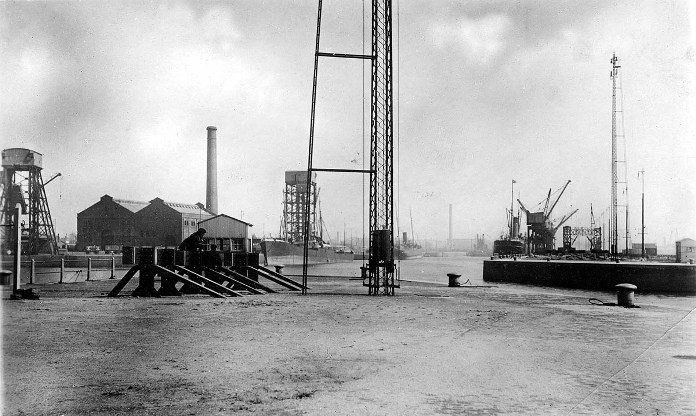 < Rothesay Dock is essentially a long single basin parallel to the river with an expanded entry basin to permit canting. In this photograph, access from the river is visible on the right and we are looking along the length of the dock. There are ships moored at the quays and in the distance is a Clyde Navigation Trust dredger. Like the other major docks on the river, Rothesay Dock was equipped with a generating facility to power the dockside equipment. The two very tall structures on the quayside are coal hoists, each capable of handling 20 ton coal wagons. It would take just over a minute for each wagon to enter the hoist, be lifted up to a height of 60 feet, then tipped up to discharge its load into a waiting ship before being returned back down to the quayside. This photograph was taken early in the dock’s history and two further coal hoists would be built beyond the one shown in the centre of view. ( Postcard published by Miss Park, Clydebank. Courtesy of the Graham Lappin Collection. )
< Rothesay Dock is essentially a long single basin parallel to the river with an expanded entry basin to permit canting. In this photograph, access from the river is visible on the right and we are looking along the length of the dock. There are ships moored at the quays and in the distance is a Clyde Navigation Trust dredger. Like the other major docks on the river, Rothesay Dock was equipped with a generating facility to power the dockside equipment. The two very tall structures on the quayside are coal hoists, each capable of handling 20 ton coal wagons. It would take just over a minute for each wagon to enter the hoist, be lifted up to a height of 60 feet, then tipped up to discharge its load into a waiting ship before being returned back down to the quayside. This photograph was taken early in the dock’s history and two further coal hoists would be built beyond the one shown in the centre of view. ( Postcard published by Miss Park, Clydebank. Courtesy of the Graham Lappin Collection. ) 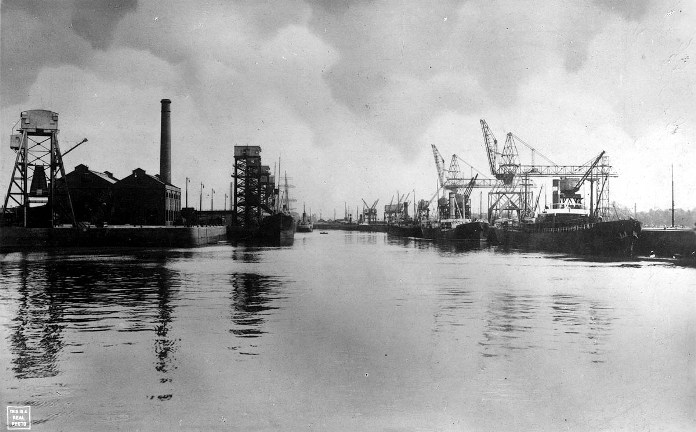
This photograph of Rothesay Dock was probably taken around 1910-1912 and now all of the coal hoists are completed. The curious structures on the quayside on the right are a novel type of mineral crane that proved to be slower and less reliable than the standard cranes. They were dismantled a few years later at the end of the Great War. ( Holmes Real Photo postcard courtesy of the Graham Lappin Collection. )
Here, vessels are moored in the entry basin of Rothesay Dock and beyond is the shipyard of John Brown & Company Ltd., which would soon achieve international renown for building the World’s largest and most famous ocean liners. The Titan cantilever crane at the shipyard is nearing completion and this photograph probably dates from early to mid 1908. The two funnelled ship on the right is the S. S. St. Andrew which had been launched from John Brown’s on 19 December, 1907 and is being prepared for service on the Irish Sea crossing between Fishguard and Rosslare. In the foreground are two tugs; the paddle tug S. S. Albatross (1878) on the left and the propeller driven S. S. Osprey (1872) on the right, both of which are laid up after completing many years of service with Steel & McCaskill on Lough Foyle. ( Postcard published by William Love, Glasgow. Courtesy of the Graham Lappin Collection. )
Three cargo vessels, high in the water and with their funnels capped, are laid up at the eastern end of Rothesay Dock in 1930/31 during the Great Depression. The S.S. Broompark and S.S. Carronpark, were owned by J. & J. Denholm & Co. of Glasgow, a shipping company that is still in business today. Built by Livingstone Cooper at Hessle on the Humber, the Broompark entered service in 1923 and would undergo a name change to Gull in 1932. On the far right of the picture is the Clyde Shipping Company tug S.S. Flying Kite which had recently entered service, having been completed by Bow, McLachlan & Company of Paisley in 1929. ( Photograph courtesy of the Graham Lappin Collection. )
The MacBrayne cargo steamer S. S. Loch Frisa is seen heading down river bound for the Western Isles and has just passed Rothesay Dock whose the coal hoists are visible on the far right of the picture. Part of the East Yard of John Brown’s can be seen in the background. ( Photograph by T. Rayner. Courtesy of the Crawford Alexander Collection. )
J. & G. Thomson & Co. Ltd., John Brown & Co. Ltd., Shipbuilding and Marine Engineering
John Brown & Company Ltd., of Clydebank, one of the most famous shipbuilders in the World, began life as the Clyde Bank Foundry, an engine and boiler works on Finnieston Street, established in 1847 by the brothers James and George Thomson. Three years later, they diversified into shipbuilding and opened the Clyde Bank Iron Shipyard at Cessnock in Govan which soon developed a reputation for excellence. This was not surprising considering that both men had previously worked for Robert Napier. In 21 years, over 120 vessels were built at the yard, including a significant number for the British & North American Royal Mail Steam Packet Company which would later become Cunard.
By 1871, the shipyard was being run by George Thomson’s sons, who were also called James and George. It was at this time that they received a compulsory purchase order from the Clyde Navigation Trust who wanted their site for the construction of dry docks. Some companies might have faltered at such a disruption to their business but James and George Thomson were able to turn this to their advantage when they purchased a green field site at the Barns O’ Clyde, just west of the village of Dalmuir. This new location, opposite where the River Cart enters the Clyde, enabled very large ships to be launched, giving the company a major advantage over their competition. The transfer was not without risk, an entire shipyard had to be moved and workers transported to and from the new location by steamer until housing for them could be built locally. In 1872, ships were being launched from the new Clyde Bank Iron Shipyard and the Thomsons subsequently moved their iron foundry and engineering works to the new location. The rapid growth of employment and the need for housing and other local amenities led to the birth of a new town, Clydebank, named after the shipyard. In 1899, the company was sold to John Brown & Co. of Sheffield, a steel making firm that specialized in the production of armour plating for warships.
Ordered by Cunard in 1910, the liner, R. M. S. Aquitania is seen under construction at John Brown’s shipyard in 1912. She had been conceived at a time of great rivalry between Cunard and the White Star Line. White Star’s Olympic and Titanic were 13 – 14,000 tons heavier than Aquitania’a predecessors Lusitania and Mauretania and were more luxurious although slower than the Cunard ships. The decision was made to build the Aquitania to larger and more luxurious specifications, greater in length and wider in beam.. She was launched from John Brown’s on 21st April, 1913 and made her maiden voyage to New York just over a year later, on 30th May 1914. Widely admired because of her elegant lines, she became known as “The Ship Beautiful”.
Here the Aquitania is seen in a stern view, illustrating the elegance of her design. She was under construction at the time of the Titanic disaster and, in response to the lessons learned, she would be equipped with enough lifeboats to accommodate all of her passengers and crew.
The Royal Navy battlecruiser H.M.S. Repulse is nearing completion at John Brown’s Shipyard in mid-1916. Her forward 15 inch guns are already mounted on their barbettes. Two destroyers, H.M.S. Romola and H.M.S. Peregrine, are moored alongside and they too will soon be joining the Fleet. Also in the fitting-out basin, on the right, is the monitor H.M.S. Erebus, and in the foreground, the submarine E35.
H.M.S. Repulse together with her sister H.M.S. Renown, nearing completion at Fairfield’s Shipyard, would become the fastest capital ships in the World upon entering service.
Proud members of the Angle Iron Shop at John Brown’s Shipyard are seen here in this company photograph taken on 9th March, 1927. It was their job to bend the plates of steel to the required angles. They could take pride in the fact that their yard was one of the most versatile on the Clyde and arguably the most famous, having completed the liners R.M.S. Lusitania and R.M.S. Aquitania and the battlecruiser H.M.S. Hood, the largest capital ship in the Royal Navy at the time. They would soon be receiving an order for their largest ship yet.
This photograph, taken in 1934, shows the second phase of construction of the Cunard liner that would become the R. M. S. Queen Mary but which at the time was known simply as Hull Number 534. The first keel plate was laid down on 1st December, 1930 and construction proceeded well until it was suspended by Cunard on 11th December, 1931 because of the Great Depression. Most of the workforce was laid off and the hull, painted with red lead and towering over nearby tenements, became a symbol of the industrial stagnation that characterized this period. Cunard applied to the British Government for a loan to complete the ship and financing was granted for both this and for construction of a second vessel ( which would become the R. M. S. Queen Elizabeth ) on condition that Cunard would merge with the White Star Line, its principal British rival at the time. This was agreed and work recommenced on Hull 534 in April 1934. She was named Queen Mary and launched by H. M. Queen Mary herself on 26th September 1934. The steamer in the foreground heading upriver is the P. S. Kylemore in service at the time with Williamson Buchanan Steamers. ( Photograph by Feilden, Liverpool. Courtesy of the Graham Lappin Collection. )
This shows the R. M. S. Queen Mary in the Fitting Out Basin of John Brown’s shipyard in 1936. She will soon be leaving to take up service on the transatlantic route between Southampton and New York via Cherbourg. Once in service, she would capture the Blue Riband from the French liner Normandie for the fastest crossing of the Atlantic Ocean in both directions. She would serve as the flagship of the Cunard White Star Line from May 1936 to October 1946 when the role would be taken over by the R. M. S. Queen Elizabeth. ( Postcard courtesy of the Graham Lappin Collection. )
The Caledonian Steam Packet Company steamer P. S. Caledonia is passing John Brown’s shipyard with a group of Glasgow High School students in May 1957. In the background, the Cunard liner R. M. S. Sylvania is nearing completion having been launched on 22nd November, 1956. After sea trials, she would soon be joining her sisters the Carinthia, Ivernia and Saxonia already in service on the Liverpool – Montreal route. ( Postcard published by W. Ralston Ltd., Glasgow. )
The story of Beardmore’s involvement in heavy engineering began when William Beardmore became a partner in the Parkhead Forge on Glasgow’s East Side. The Forge had been established by the Reoch Brothers & Company in 1837 and acquired by Robert Napier four years later in order to supply his new shipyard in Govan with forgings and iron plates. ( Another another example of Robert Napier’s farsightedness and business acumen. ) William Beardmore’s brother and son, William Jr., joined the partnership and William Jr. subsequently became the sole partner, founding William Beardmore & Company in 1886. Beardmore diversified into shipbuilding by acquiring Robert Napier’s former Govan shipyard in 1900 and by building the Naval Construction Yard at Dalmuir, which was the largest and most advanced shipbuilding facility in Great Britain at the time. This view shows the large gantry that was erected to facilitate the shipbuilding process. ( Photograph courtesy of the Graham Lappin Collection. )
Here, two naval vessels are being fitted out at William Beardmore’s shipyard. The ship on the left is the pre-dreadnought battleship H.M.S. Agamemnon which was launched on 23rd June 1906 and commissioned into the Royal Navy on 25th June 1908, the first capital ship to be built by William Beardmore & Company. On the right is the Russian armoured cruiser Rurik which had been launched at Vickers shipyard in Barrow-in-Furness on 4th November, 1906 and then brought to Dalmuir for fitting out. With the approach and outbreak of the Great War, production at the shipyard was ramped up considerably and concentrated mainly on escort vessels and landing craft although the battleships H.M.S. Benbow (1914) and H.M.S. Ramillies (1917) were completed in addition to H.M.S. Argus (1918), the world’s first purpose-designed aircraft carrier, having a full-length flat top flight deck. Aircraft and aircraft engines were also manufactured at Dalmuir, including the Sopwith Camel and Sopwith Pup, built under licence. Beardmore’s also produced its own aircraft as well as arms and armaments. In the 1920’s, the main focus was on building passenger and cargo vessels to replace war losses but with the post-war slump and the advent of the Great Depression, the shipyard was forced to close in 1930. ( Photograph courtesy of the Graham Lappin Collection. )
This shows the Erskine Ferry (II) built in 1936 and seen here unloading cars at the Erskine ramp in the early 1950’s. The village of Old Kilpatrick is in the background with the Kilpatrick Hills beyond. When the Erskine Bridge opened in 1971, the cross-river ferry service was discontinued. ( Postcard published by Vista of Glasgow. Courtesy of the Graham Lappin Collection. )
Designed by John Smeaton and completed in 1790, the Forth & Clyde Canal traverses the Lowlands of Scotland at their narrowest point, connecting the River Clyde at Bowling with the River Forth near Grangemouth. The entire construction spanned 22 years, including a 7 year break for lack of funds. It was on the Forth & Clyde Canal that the world’s first practical steamboat, the Charlotte Dundas designed by William Symington, was tested in 1803 and towed two 70-ton barges almost 20 miles. The tranquil scene in this photograph probably dates from the 1880’s and shows two vessels in the canal basin at the east end of Bowling Harbour. Lock gates and an open bridge are visible behind the vessel on the left. ( Photograph from “History of the Parish of West or Old Kilpatrick & of the Church & Certain Lands in the Parish of East or New Kilpatrick” by John Bruce, published by John Smith & Son, 1893. Courtesy of the Graham Lappin Collection. )
During the winter, there was a greatly reduced demand for sailings to Clyde resorts and so most of the excursion steamers were laid up until the next season began in April. In this view, several steamers are being overwintered at Bowling Harbour, probably between 1904 and 1905. Part of Bowling Station and the North British line between Glasgow and Helensburgh are visible in the foreground. The two double-funnelled paddle steamers nearest the camera are MacBrayne’s P. S. Iona on the left and the P. S. Grenadier on the right. Beside the Iona is M.T. Clark’s Lord of the Isles whose funnels have the two white stripes. Also present are steamers from the North British Steam Packet Company and Buchanan fleets as well as additional MacBrayne vessels, including the famous R.M.S. Columba on the far side. ( Courtesy of the Crawford Alexander Collection.)
There had been a wharf at Bowling since 1850 and it provided a vital connection between the Glasgow steamer service and the newly constructed railway line linking Bowling with Balloch on Loch Lomond. In this scene, the Buchanan paddle steamer Isle of Cumbrae, built originally as the Jeanie Deans in 1884, is calling at Bowling Pier to disembark passengers on her way up river circa 1912. Thick black smoke obscures the view of the helmsman as he leans to the right to see beyond the funnel. ( Postcard published by Pater of Bowling. Courtesy of the Graham Lappin Collection.)
This scene, captured at Bowling in the Spring of 1948, shows the paddle steamers P. S. Waverley on the left and P. S. Jeanie Deans on the right. The Waverley has recently been repainted in British Railways livery while the Jeanie Deans is still in the colours of the London & North Eastern Railway Company. British Railways had just been formed as a consequence of the Transport Act of 1947 in which the existing four large railway companies were nationalized into one. Just passing Bowling Harbour is a Blue Star Line cargo vessel, being escorted downstream by a Clyde Shipping Company tug. The bend in the river at this location, known as the Bowling Bend, is clearly visible. ( Postcard published by W. Ralston Ltd., Glasgow. Courtesy of the Crawford Alexander Collection. )
Shipbuilding in Bowling began at the site of a dry dock that was part of the Forth & Clyde Canal and intended for the repair of vessels using the navigation. The Port Glasgow shipbuilder William McGill constructed the 81 ton brig Brothers at the canal dry dock in 1790. He then returned to Bowling in 1800 with his brother Thomas and leased the dry dock area for further ship construction. The business prospered and continued under Thomas McGill’s sons until 1846 when the dry dock was removed during the enlargement of the canal basin and provision of a harbour. In 1851, James Scott joined the McGill brothers and set up the shipyard on land owned by Scott’s family at Littlemill at the west end of the harbour. The firm, now known as Scott & McGill, increasingly specialized in the construction of tugs, trawlers and coastal steamers, building 40 of the famous Clyde puffers, which was approximately 10% of the total number built. In 1965, the yard was taken over by Scott Shipbuilding & Engineering Company of Greenock and it closed in 1979. Archive records show that 39 vessels were built prior to 1861 and a further 460 between 1861 and 1979. This 1962 photograph shows the coastal vessel M.V. Olive under construction for Joseph Fisher & Sons of Newry. ( Photograph © Alistair Baird. Reproduced with permission. )
A short distance to the west of Bowling Harbour is Dunglass Castle and the monument to Henry Bell who was a prime mover in applying steam power to propel vessels on water.
After failing in 1800 and again in 1803 to persuade the Lords of the Admiralty to take up his ideas, despite the support of Lord Horatio Nelson, Henry Bell sent his proposals to contacts on the European mainland and in the United States of America. Experiments on steam propulsion in Britain by Scottish engineer William Symington working in collaboration with Patrick Miller, latterly with the patronage of Lord Dundas, were successful but failed to elicit financial support from the British Government. The Americans took up Henry Bell’s ideas enthusiastically and in 1807, Robert Fulton, with whom Bell had been in communication, successfully developed the first commercially successful steamboat, the North River Steamboat, to carry passengers 150 miles up the Hudson River from New York City to Albany.
Meanwhile, back home in Scotland, Henry Bell decided to take matters into his own hands and had a paddle steamboat, the Comet, built by Messrs. John Wood & Sons at Port Glasgow in 1812. The craft was 45 feet long, 10 feet wide, and weighed 28 tons. John Robertson of Glasgow supplied the two engines and the boiler was by David Napier, also of Glasgow. A yardarm was added to support a sail should there be a following wind. The Comet made her delivery voyage from Port Glasgow 21 miles upriver to the Broomielaw, then travelled 24 miles down river to Greenock, at an average speed of five miles per hour against a head-wind. She was the first steam-powered vessel in Europe to carry fare-paying passengers and her success marked the beginning of a serious drive to apply steam power to shipping, an endeavour at which Glasgow and the Clyde would excel.
This is an aerial view of Dumbarton Rock, a plug of volcanic basalt 240 feet high, which has served as a strategically important settlement as far back as the Iron Age. It lies just east of the mouth of the River Leven. In the foreground is Dumbarton Castle, whose buildings and ramparts date back to the 18th century. There were many fortresses before it on the Rock and between the 5th and 9th Centuries, it served as the centre of the Kingdom of Strathclyde. During the ages, it has been laid siege by many diverse groups, including Northumbrians, Picts and Vikings, and has changed hands many times. Beyond the rock is part of the town of Dumbarton and the famous shipyard of William Denny & Bros. A remnant of Dumbarton Castle Pier is visible in the foreground. ( Photograph supplied by Graham Lappin. )
Denny’s of Dumbarton
The shipbuilding firm that came to be known as Denny’s of Dumbarton began as William Denny & Son and achieved fame for constructing the Margery, the first steamer to serve on the River Thames. It was Denny’s son, also named William, together with his brothers, Alexander, James and Peter who formed the company Denny Bros. in 1844 and this was reconstituted as William Denny & Bros. in 1849 after Alexander left. The Denny family quickly established a reputation for high quality construction. The iron paddle steamer Premier of Weymouth built in 1846 lasted until the late 1930’s. Because of the physical limitations of launching into the River Leven, the company focused on the construction of medium-sized ships that were technologically advanced. They won a challenging contract from the Belgian Government to built the fast cross-channel paddle steamer P.S. Princesse Henriette which achieved 21 knots on trial in 1888, one half-knot higher than requested and with the paddles turning at 50 rpm. At the time, she was reputed to be the world’s fastest passenger ship and it was this success that paved the way for Denny’s subsequent pre-eminence in cross-channel and coastal passenger steamship design. Working in collaboration with Parsons Marine Steam Turbine Co. Ltd. and Captain John Williamson, the company completed the T.S.S. King Edward in 1901, the world’s first turbine-powered merchant vessel. This was the first of a long list of fine turbine steamers constructed by Denny of Dumbarton.
In this 1949 scene, we see the cross-channel steamer T.S.S. Maid of Orleans in the foreground, close to completion for the British Transport Commission and intended for the Folkestone-Boulogne service. To the side is the MacBrayne steamer M.V. Loch Seaforth which would service the mail route between Mallaig, Kyle of Lochalsh and Stornoway. ( Photograph from “The Lowlands of Scotland: Glasgow and the North” by Maurice Lindsay, published by Robert Hale Ltd., London, 1953. )
This shows the paddle steamer Loch Lomond moored at Dumbarton’s Old Quay, circa 1868. She is in the former Dumbarton Steamboat Company colours of black funnel with a broad central white band. In the background is the Steam-Boat Tavern on the left and the Old Clyde Tavern on the right. This photograph can be dated with some accuracy because the Loch Lomond was built in 1867, laid up in 1869, and sold to a foreign buyer in 1870. She was not a commercial success for her owner, Peter Denny, because her Glasgow service could not compete with that of the Glasgow, Dumbarton & Helensburgh Railway which had opened a line to Dumbarton in 1858. ( From a stereoview courtesy of the Graham Lappin Collection. )
Because of its situation, Dumbarton never became a regular port of call for steamers sailing to and from Glasgow. To reach the town required a considerable detour from the main watercourse and involved entering the mouth of the River Leven, taking care to avoid the sandbar, and passing the shipyards of William Denny & Bros. and Archibald McMillan & Co. before reaching the Old Quay.
In an attempt to overcome this problem, the Town Council authorized the construction of Dumbarton Pier that extended well out into the Clyde from the Castle Rock and was connected to the town by an esplanade. Opened with great pomp and ceremony on Saturday 8 May 1875, it was not a popular choice with the townspeople who found it much more convenient to board a train for Craigendoran or Helensburgh and then take a steamer from there rather than walk the considerable distance from the town out to the pier.
Legends © Christopher J. Jones
Except where otherwise acknowledged, all photographs and prints are from the author’s collection.
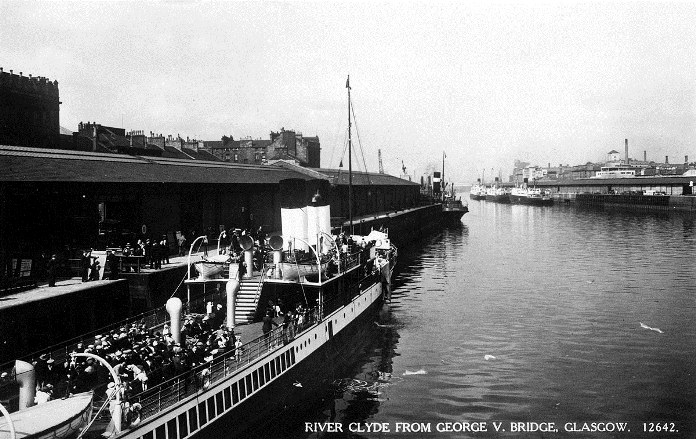
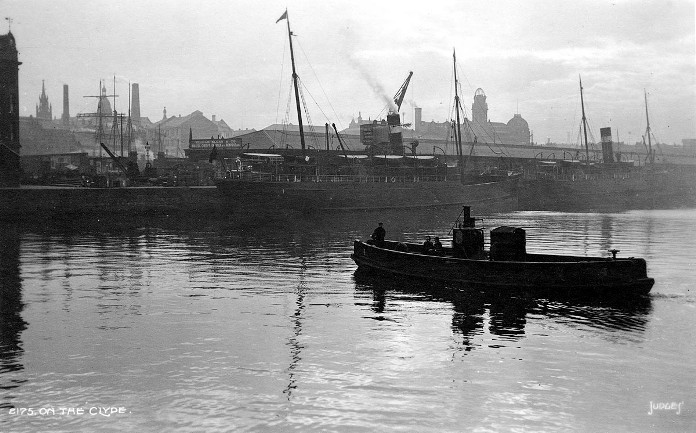
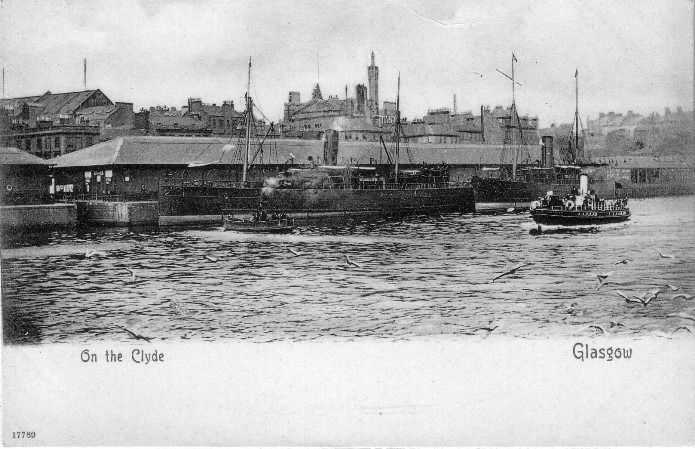
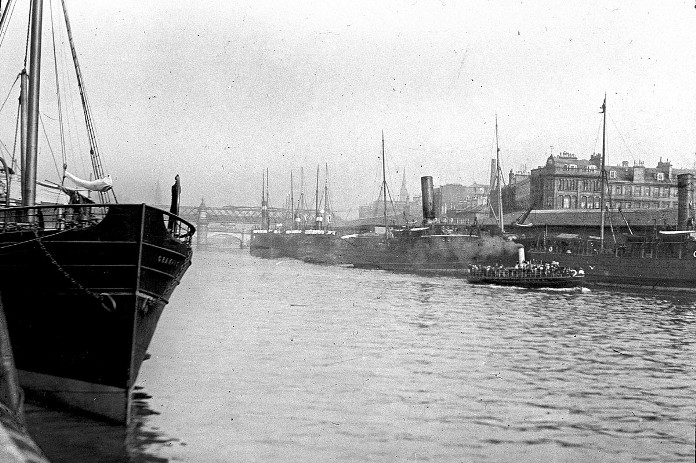
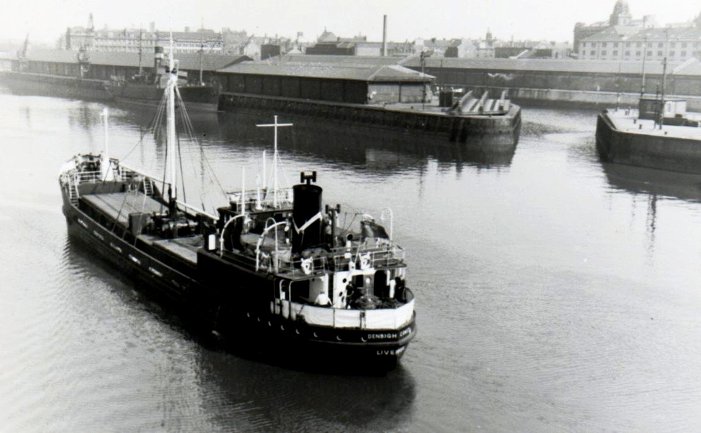
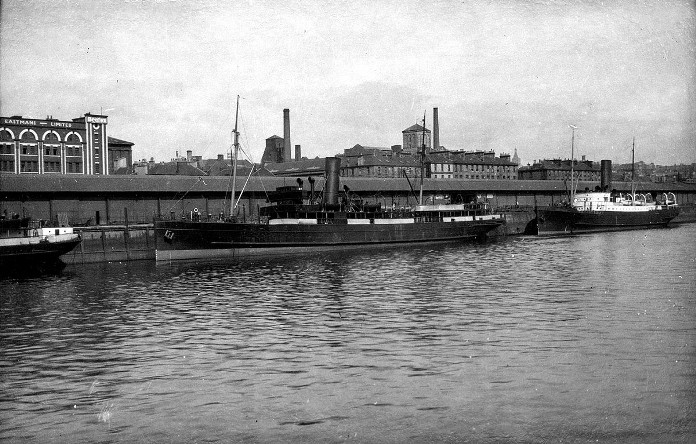
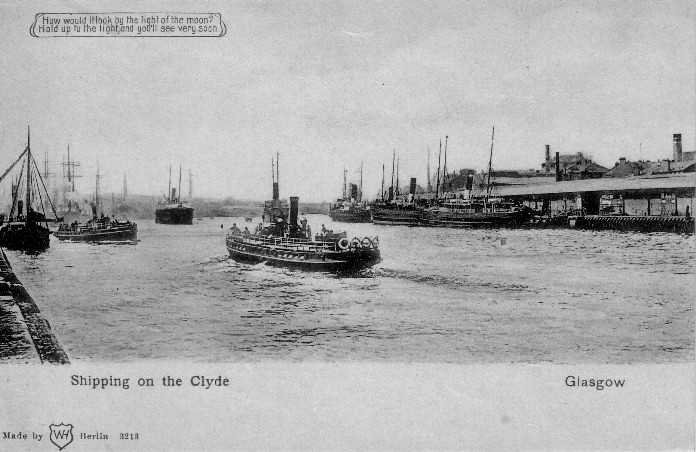
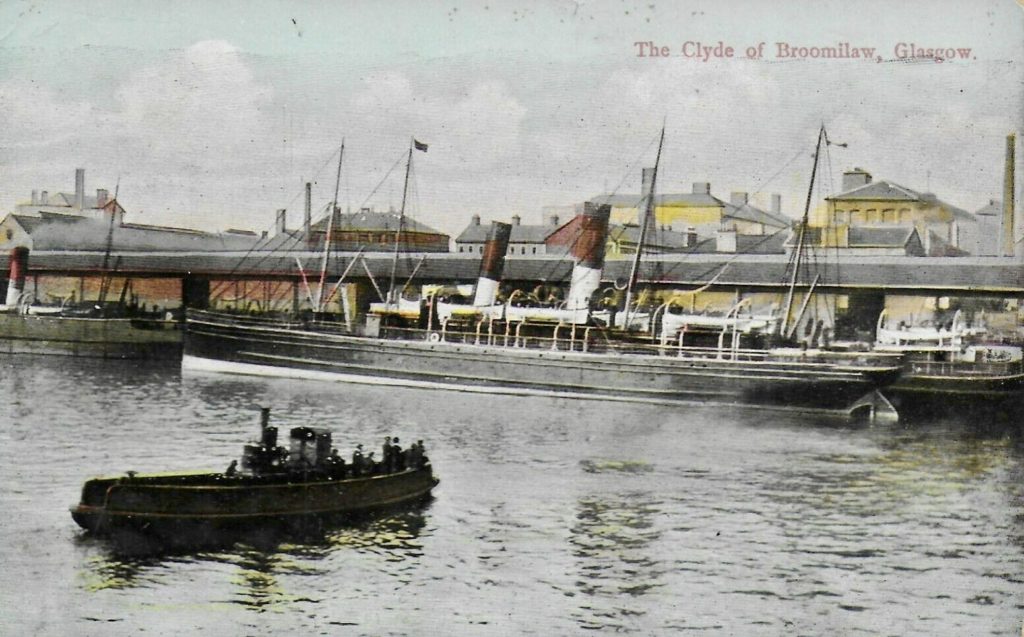
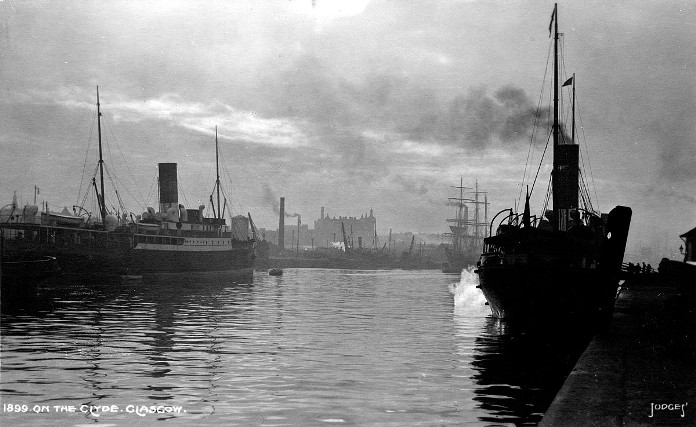
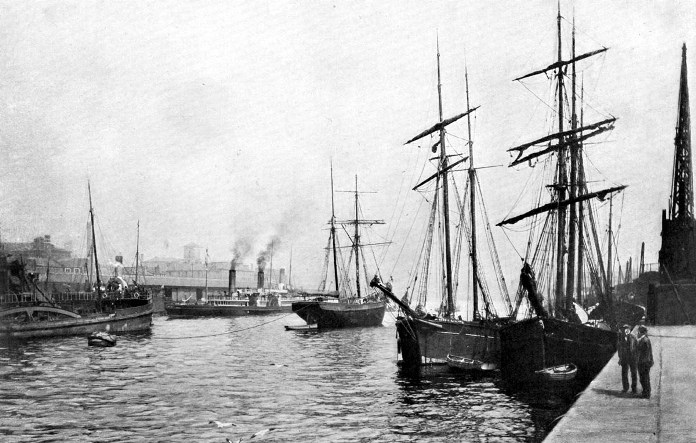
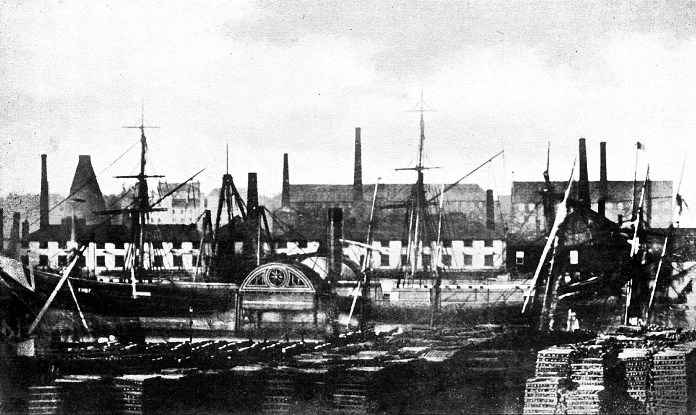
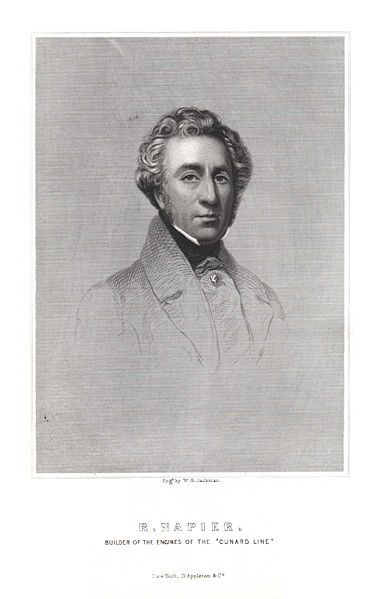
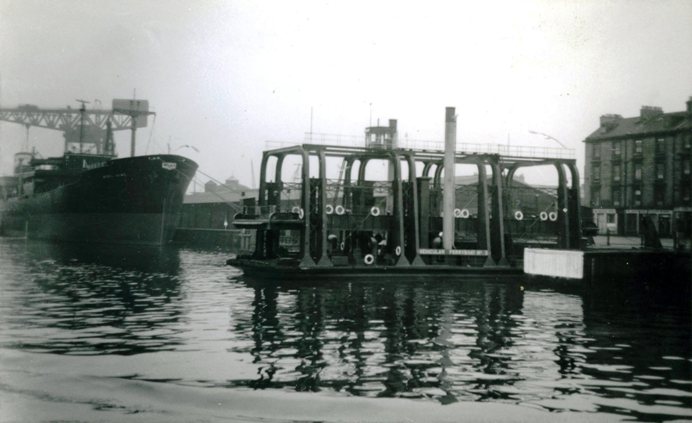
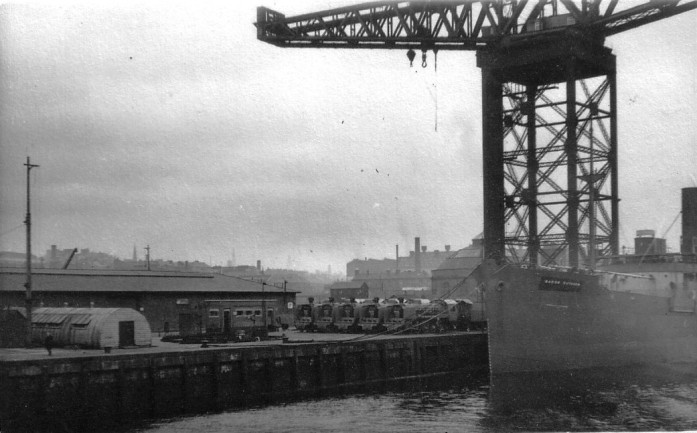
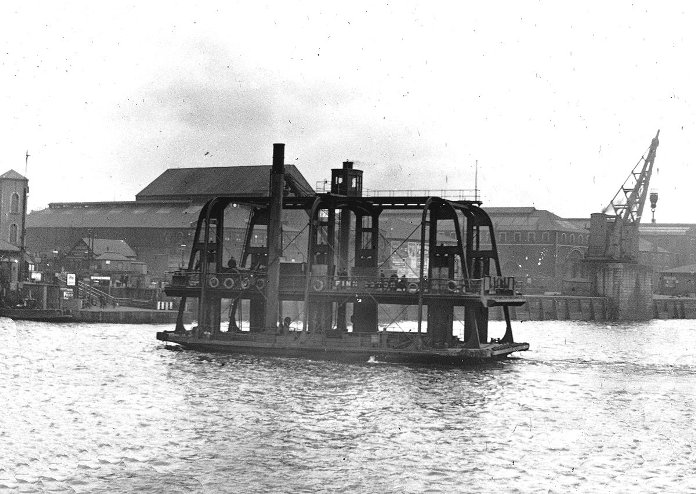
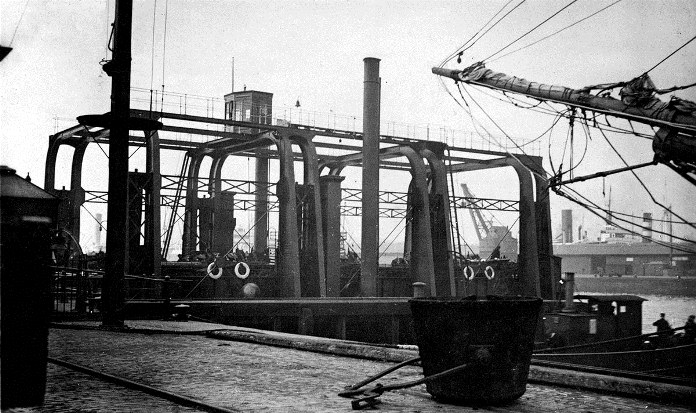
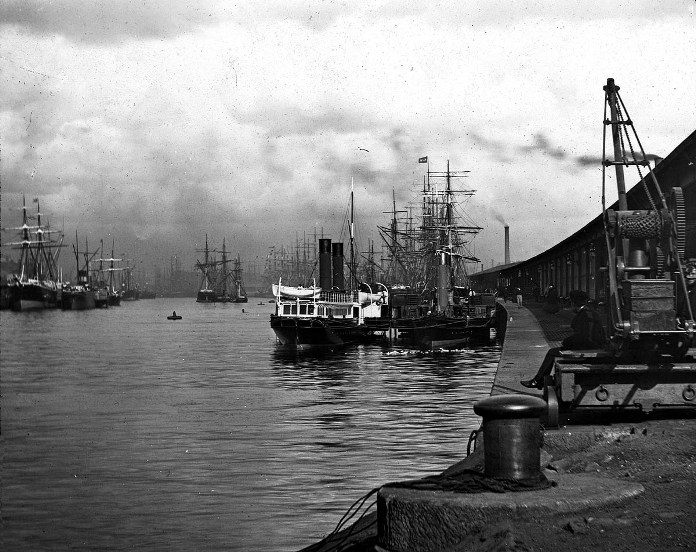
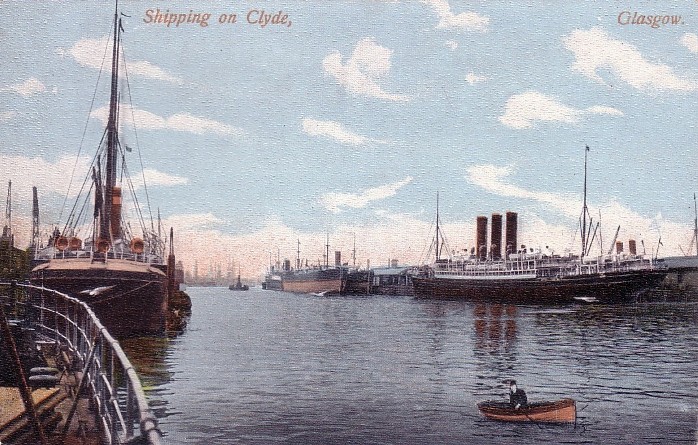
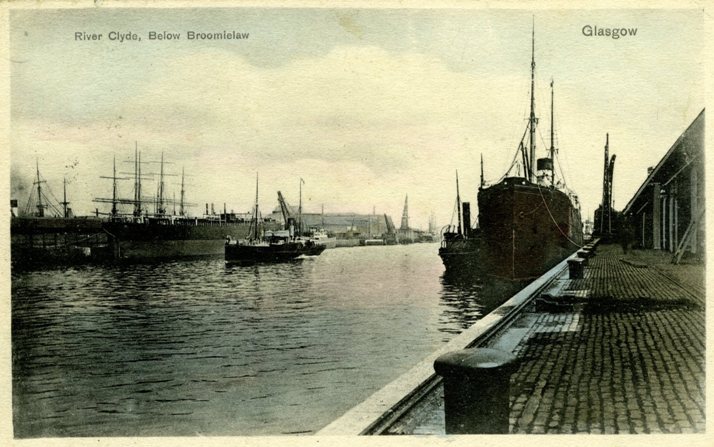
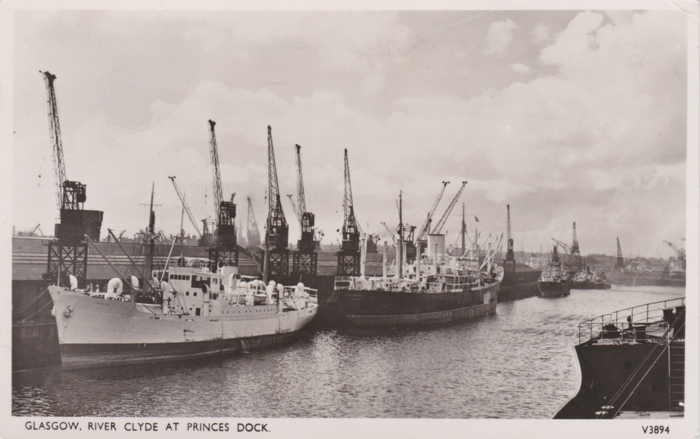
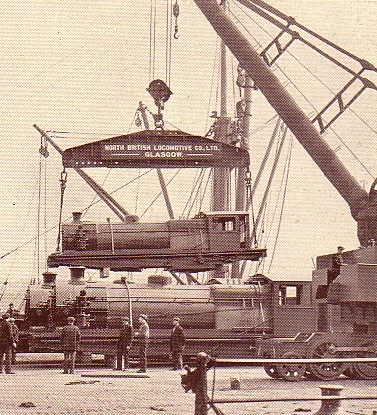
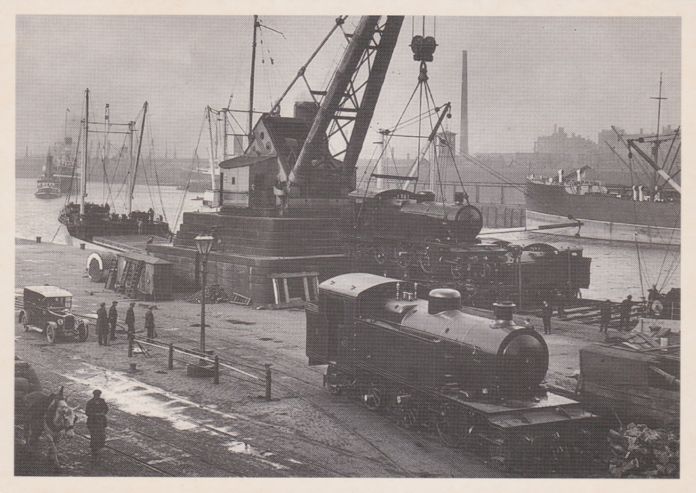
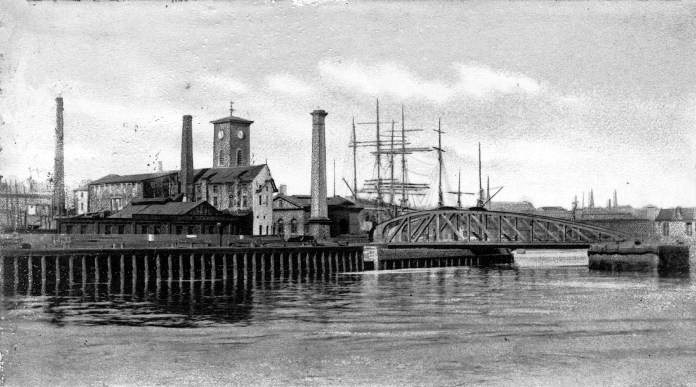
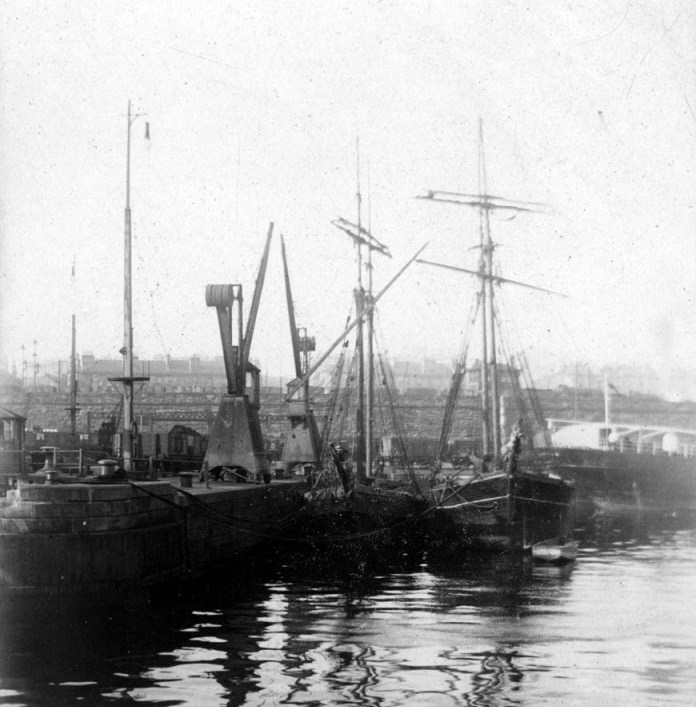
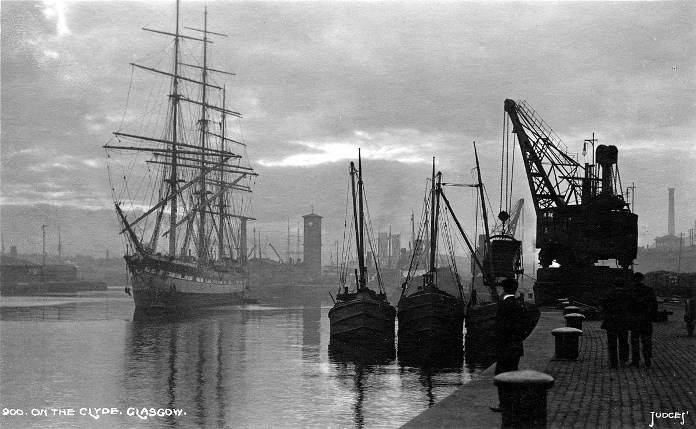
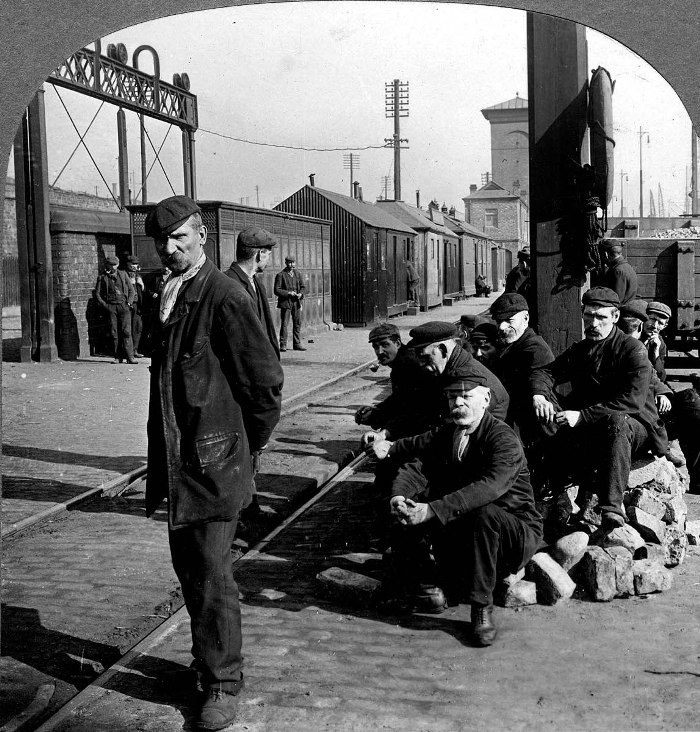
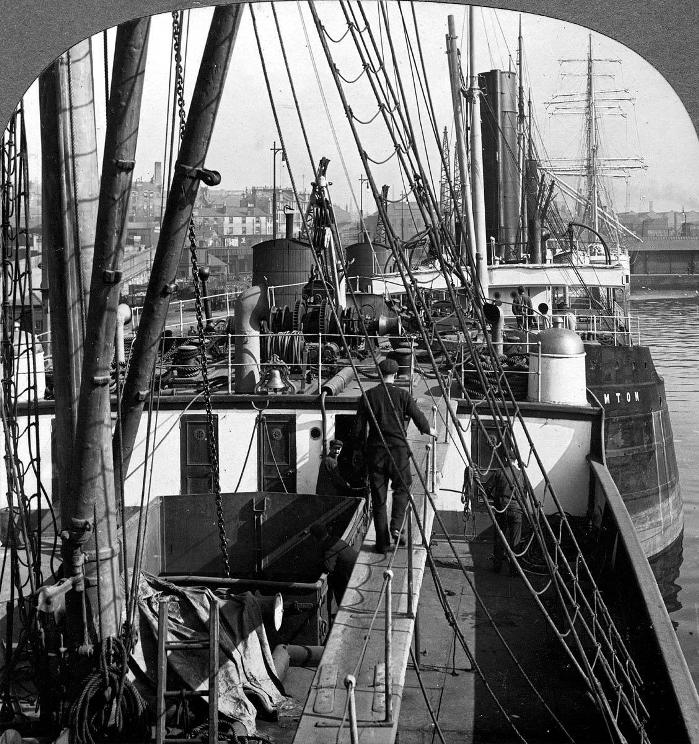
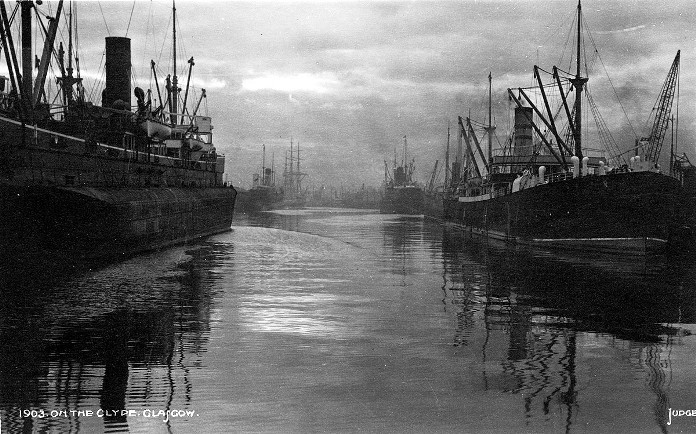
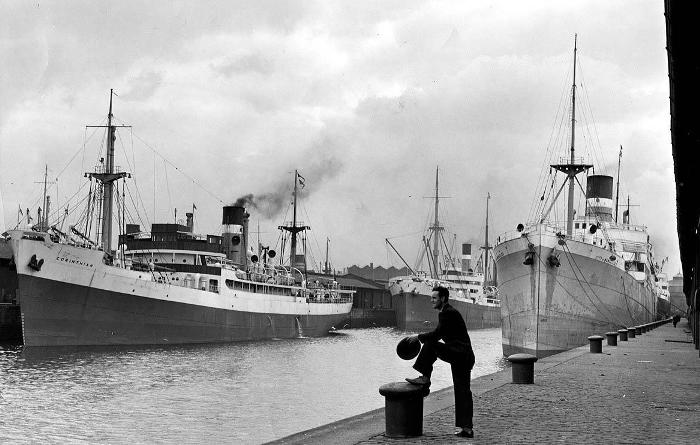
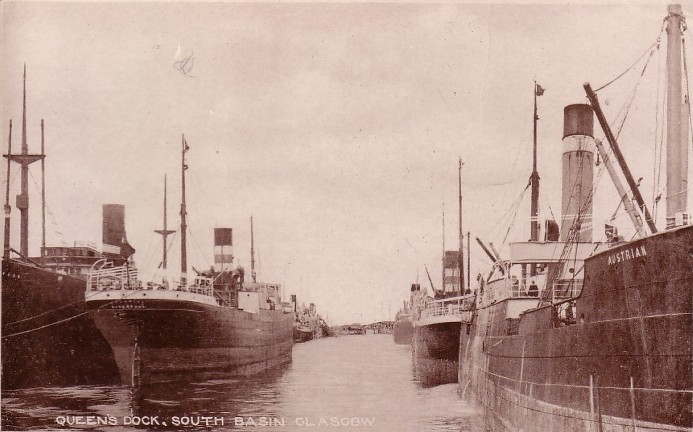
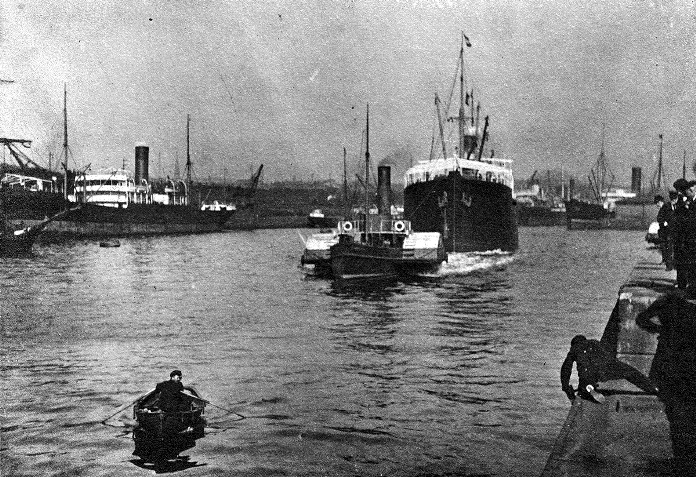
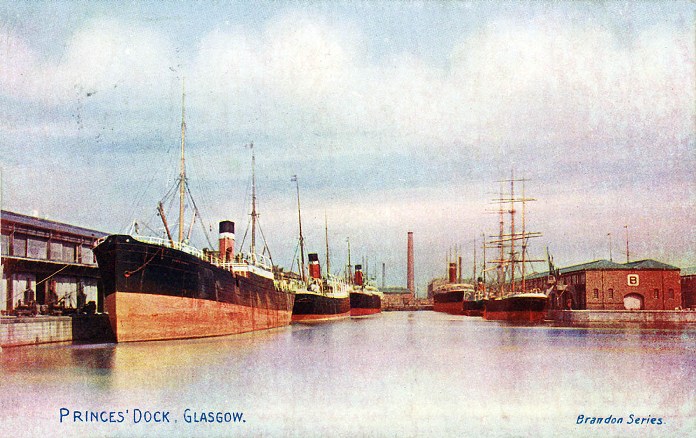
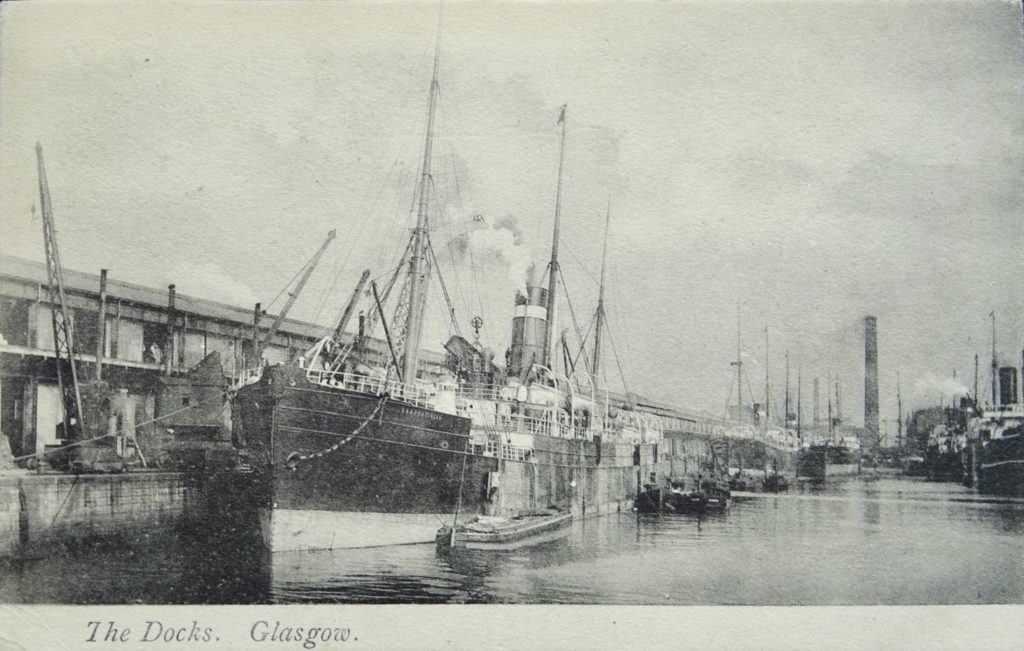
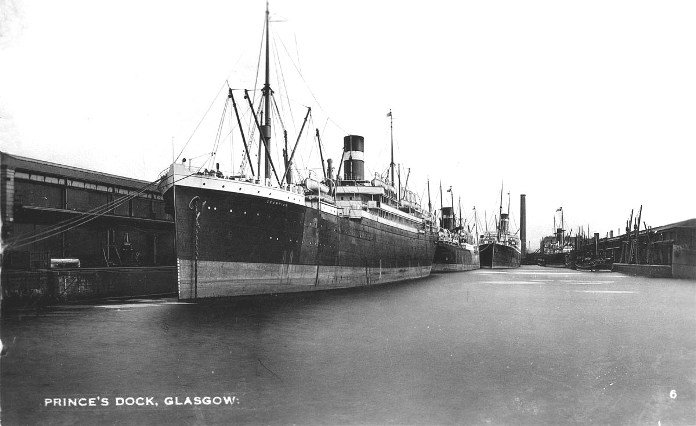
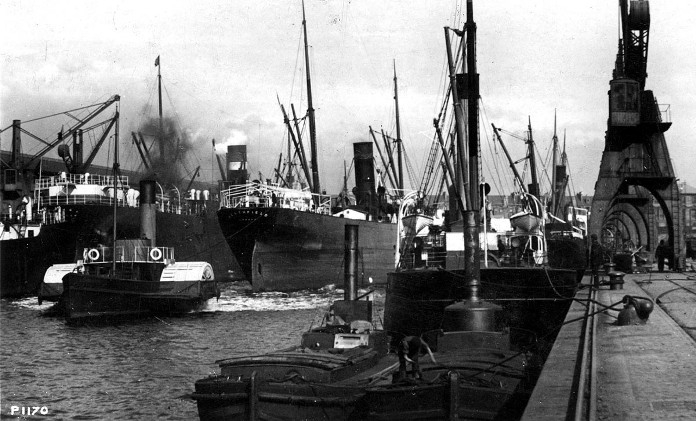
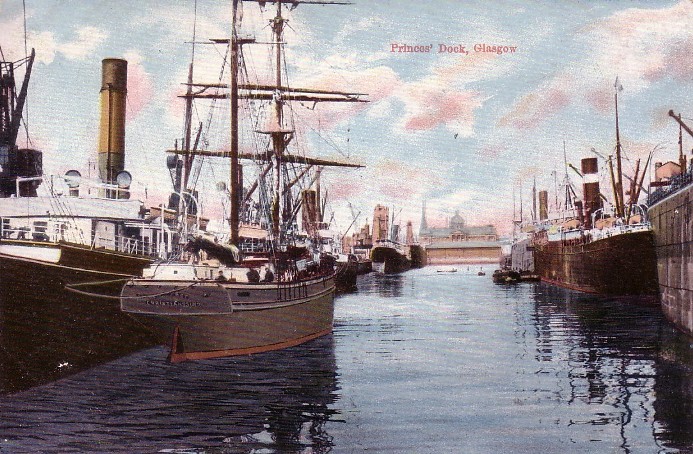
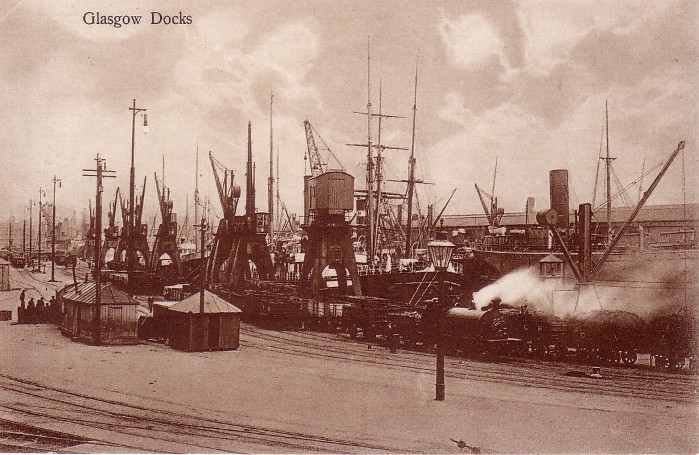
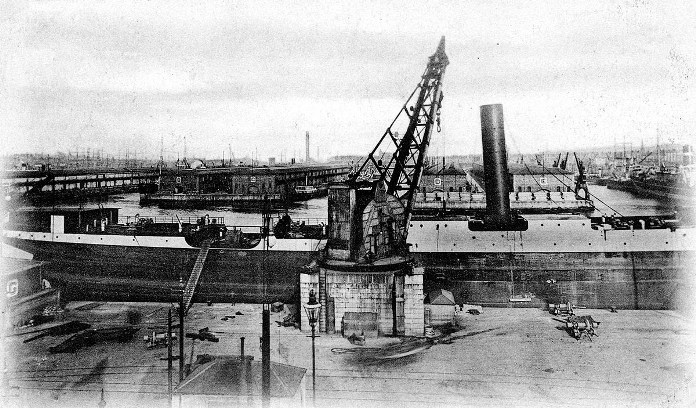
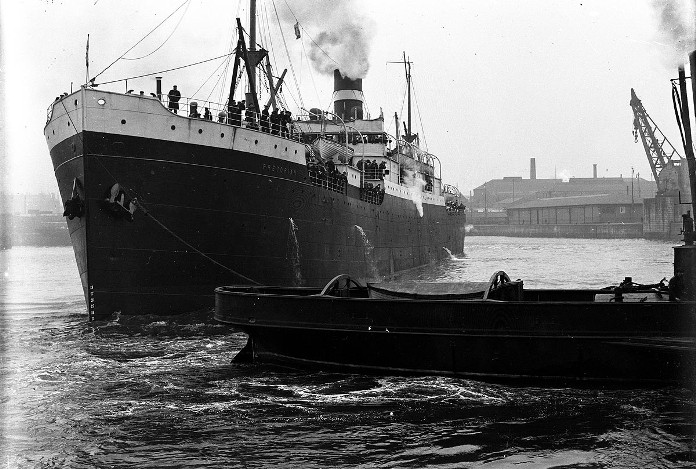
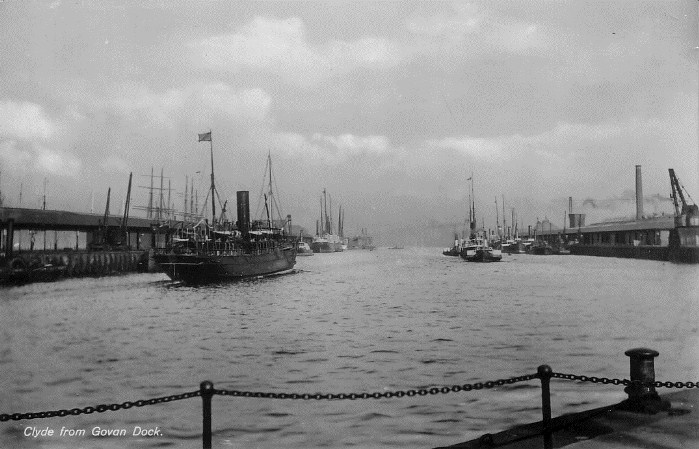
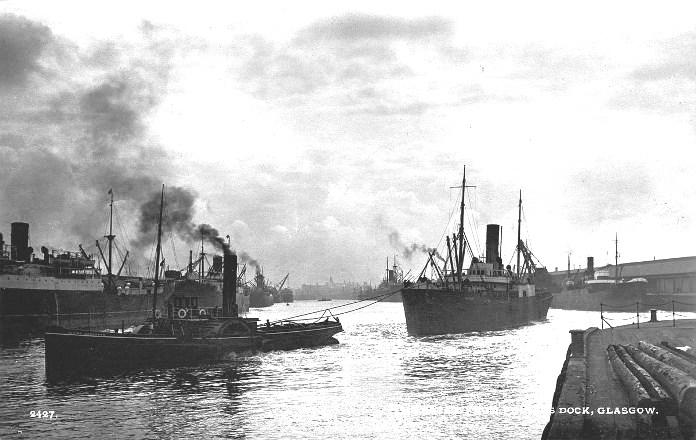
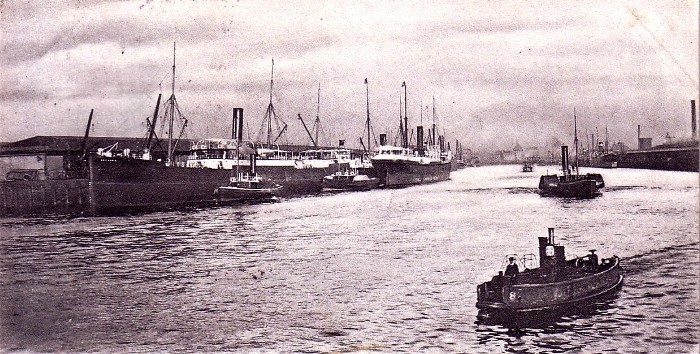
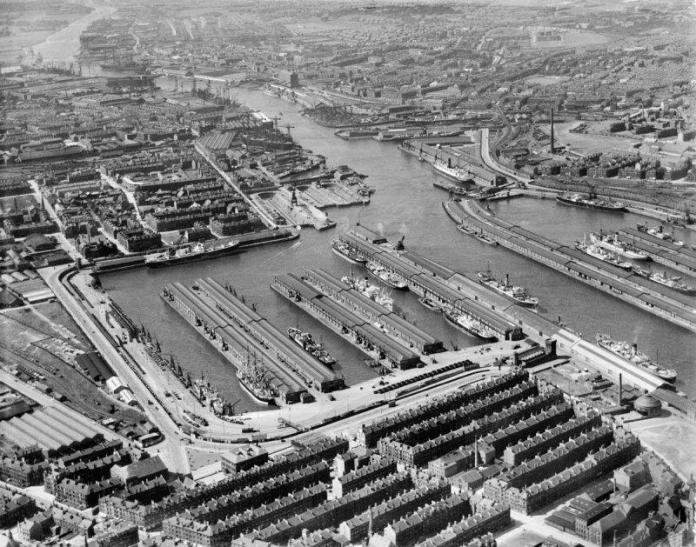
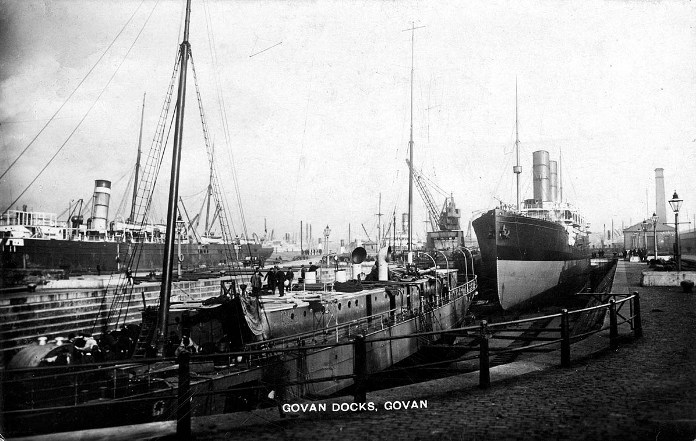
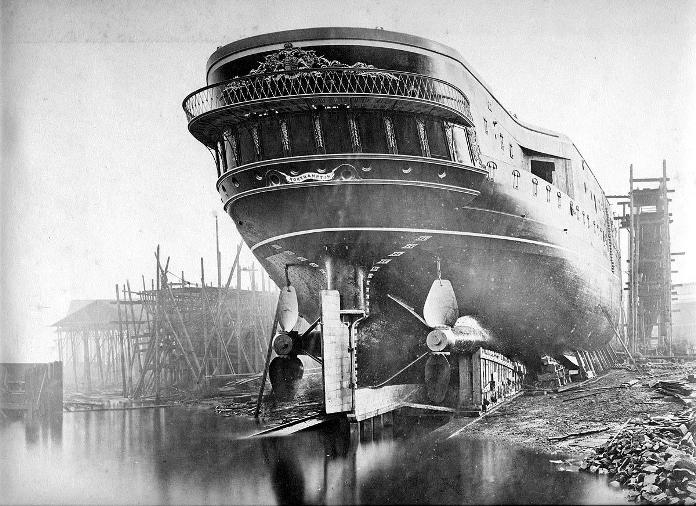
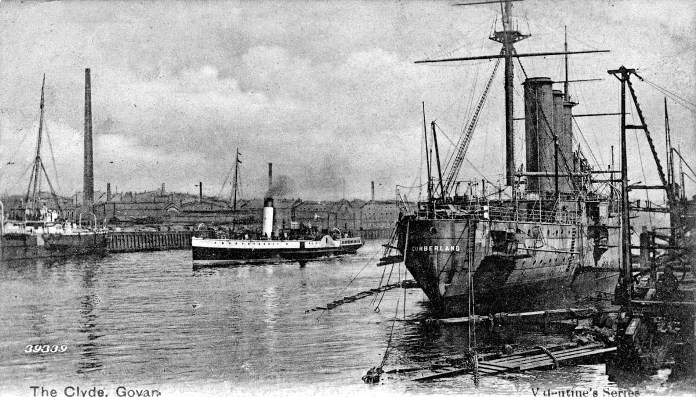
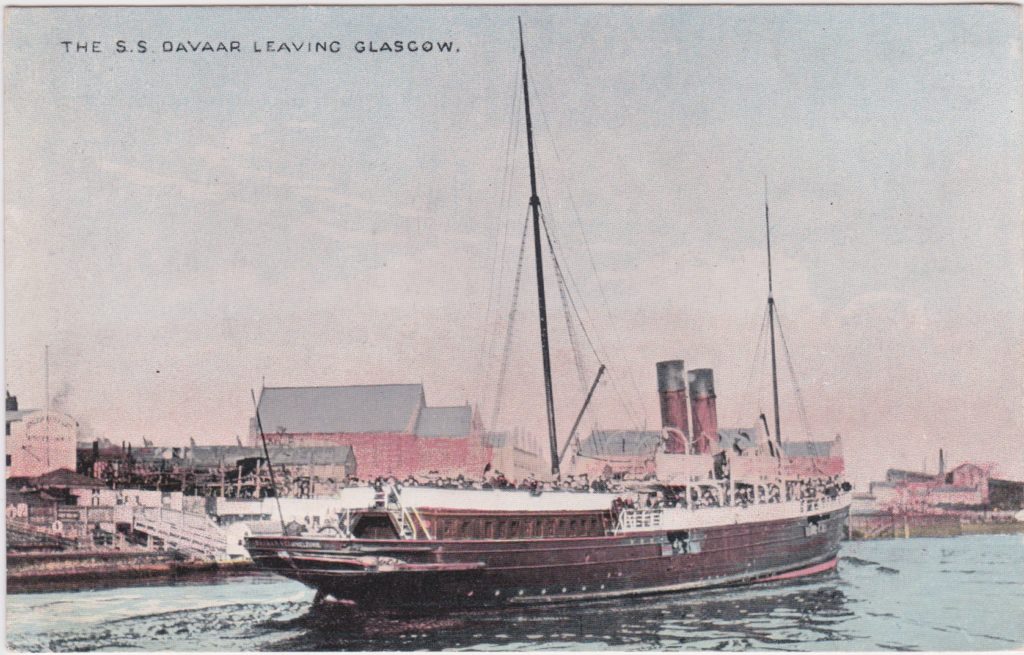
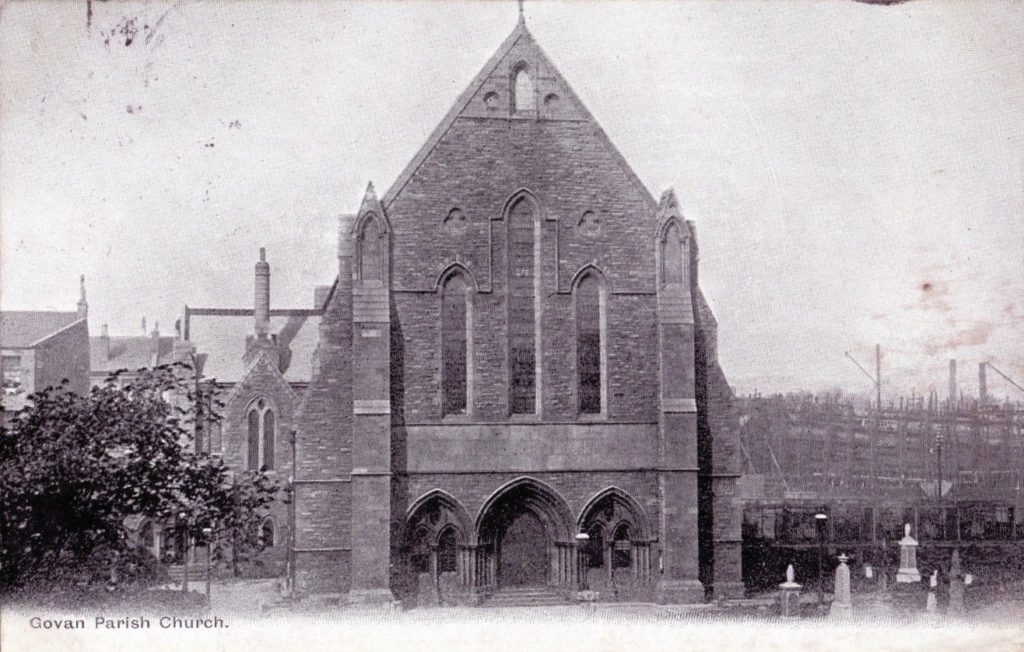
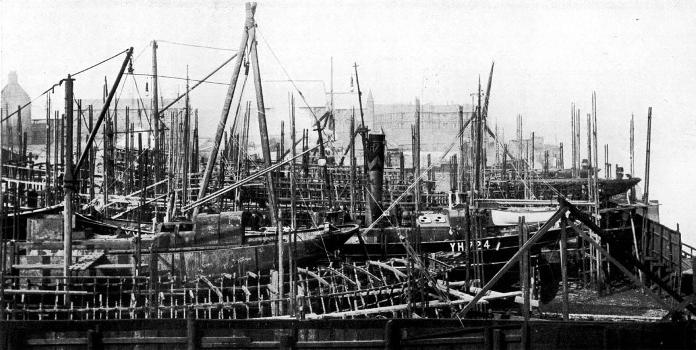
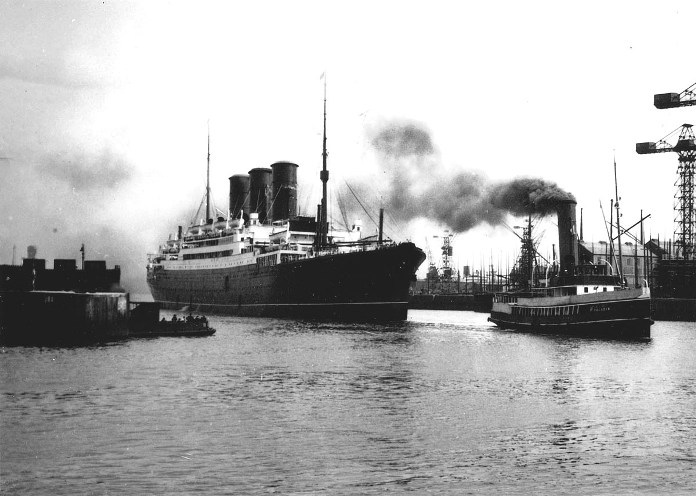
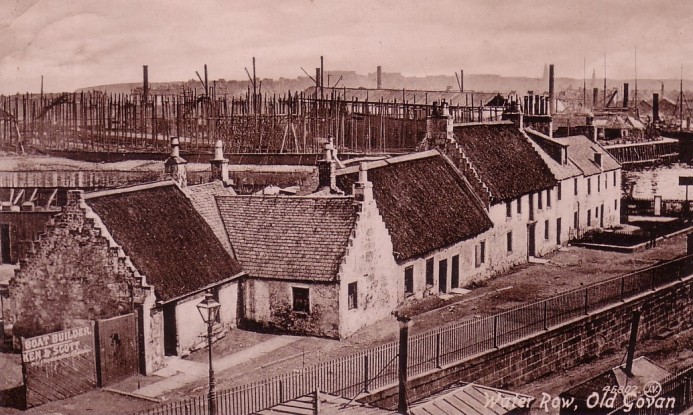
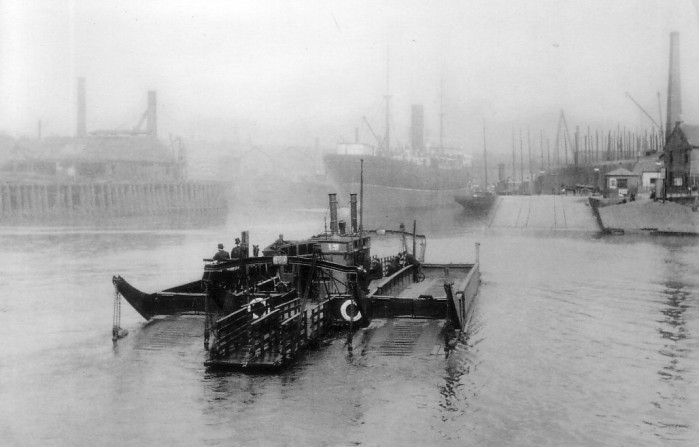
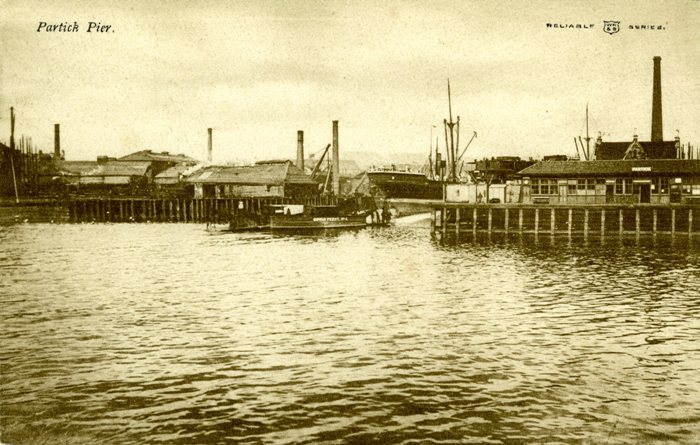
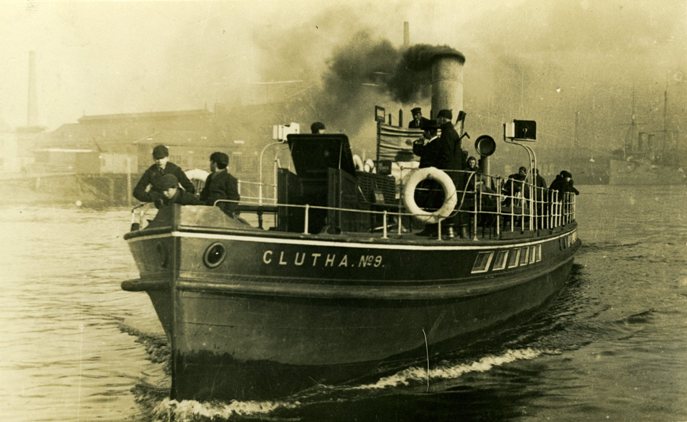
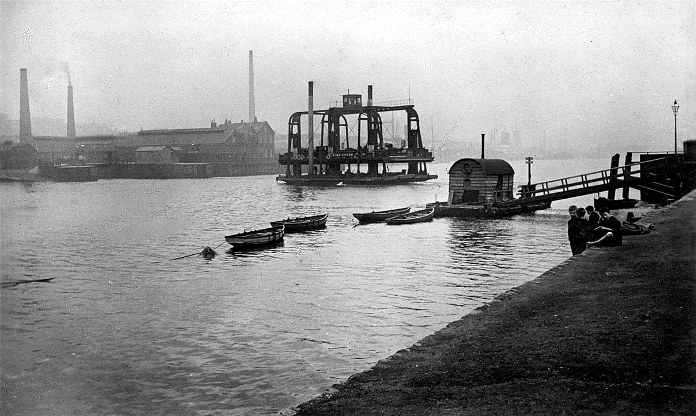
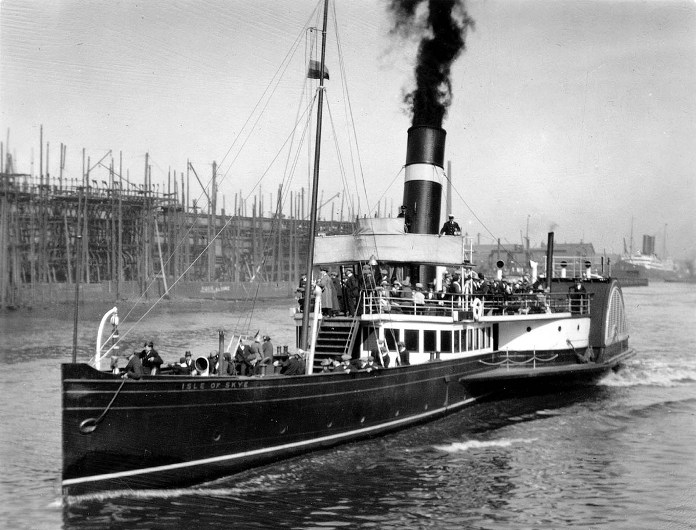
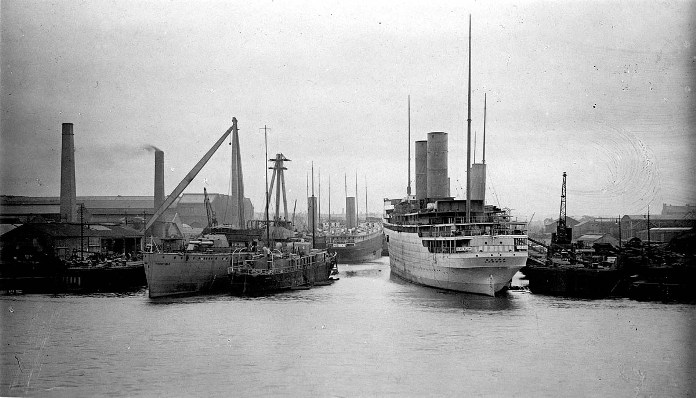
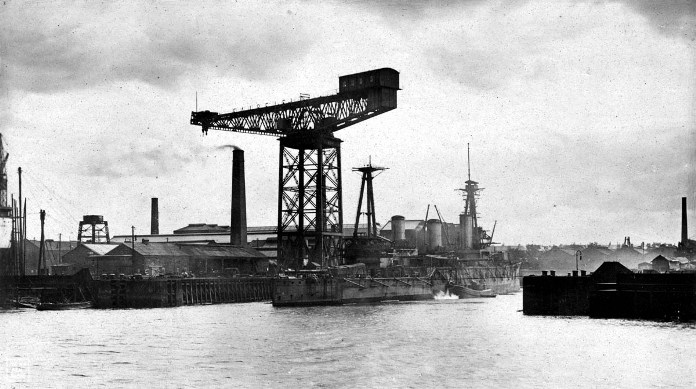
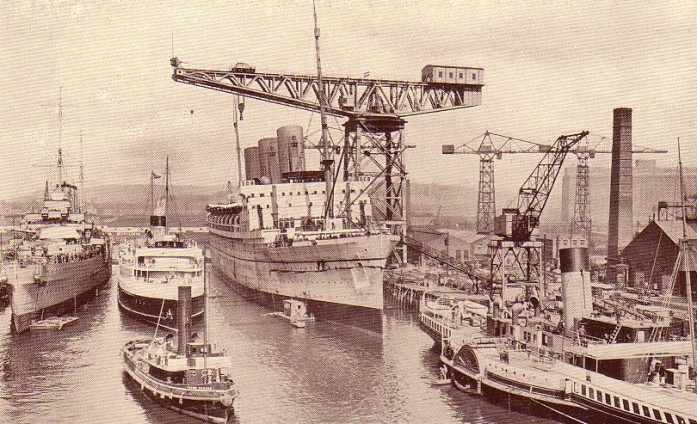
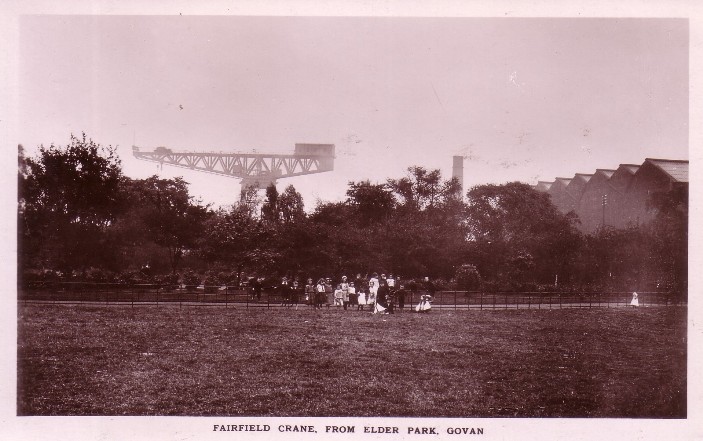
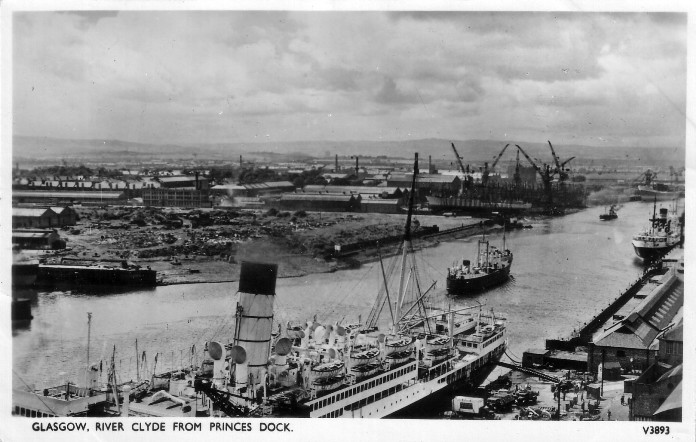
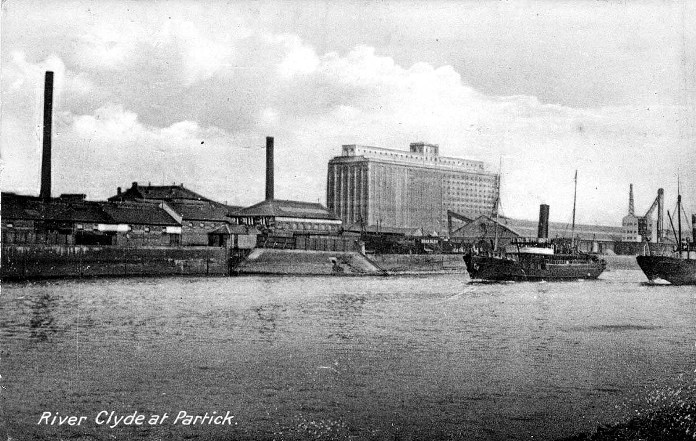
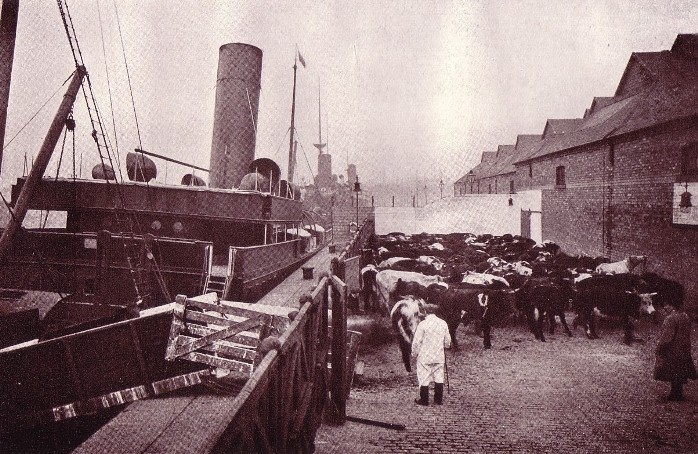
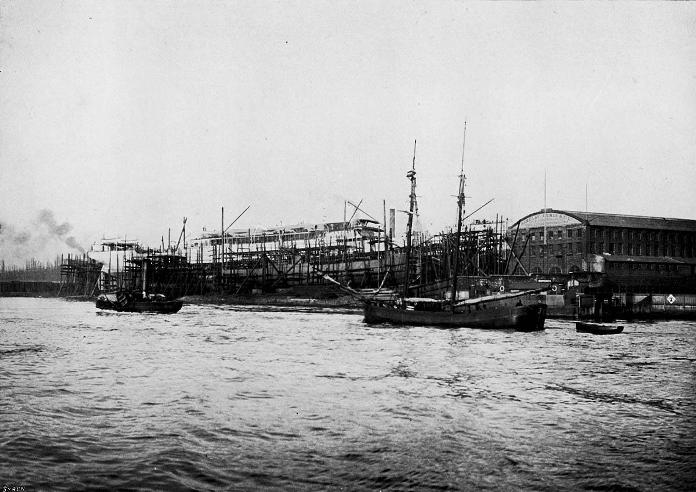
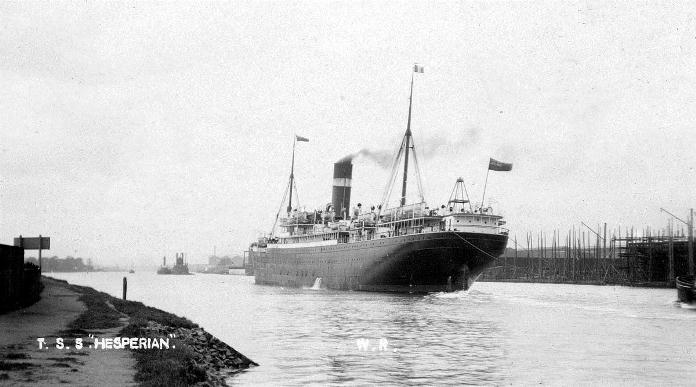
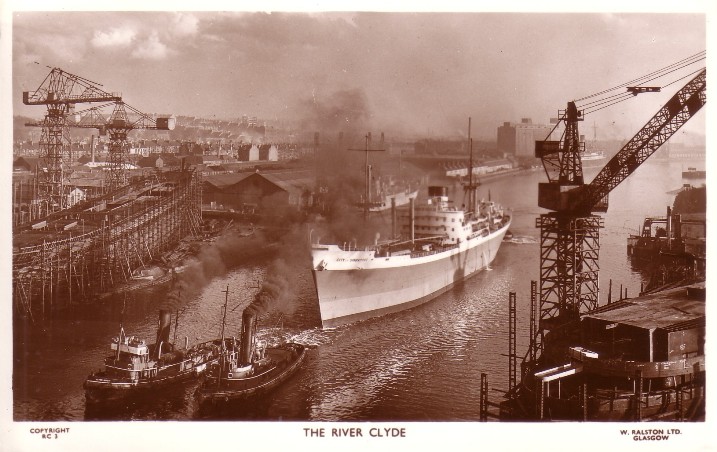
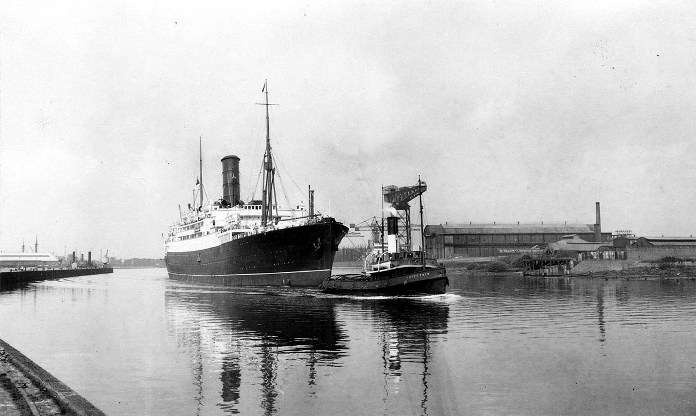
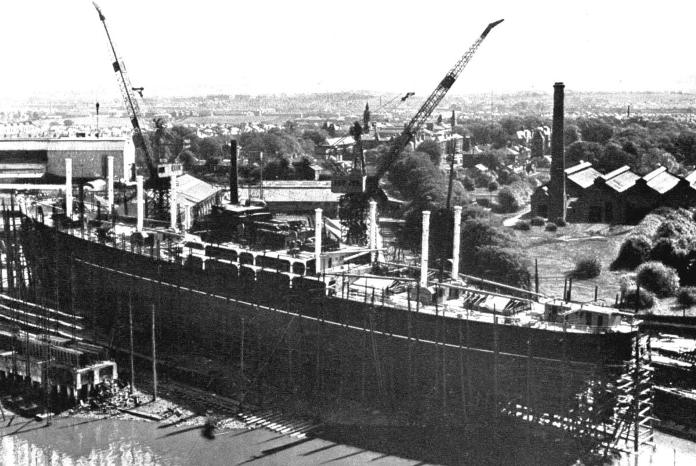
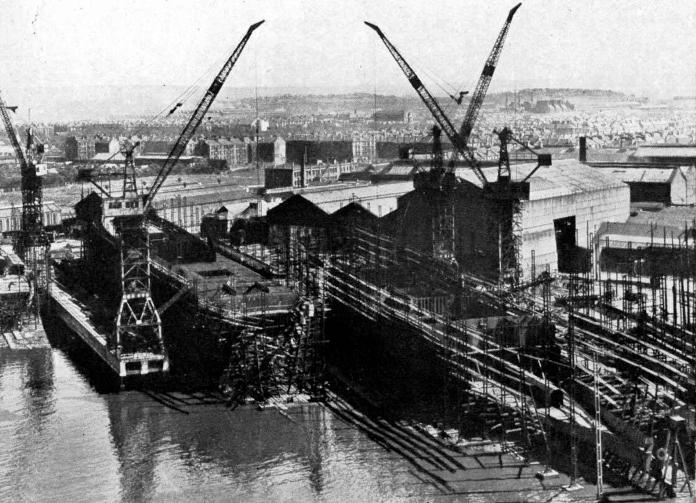
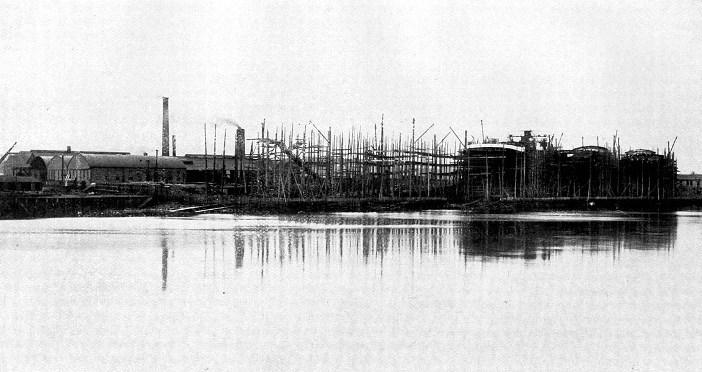
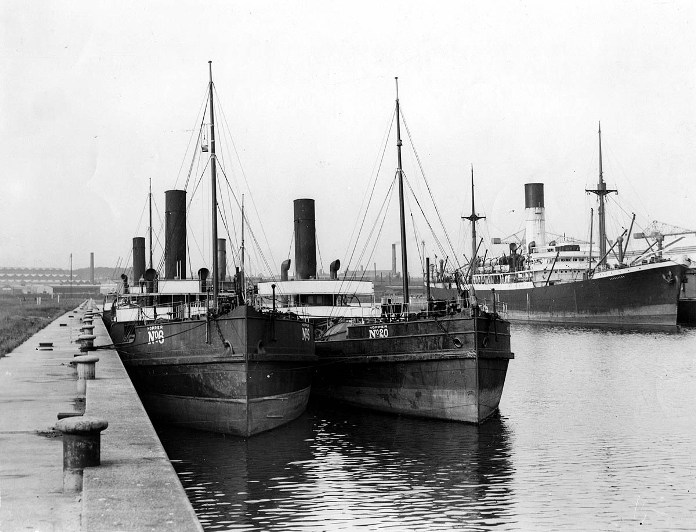
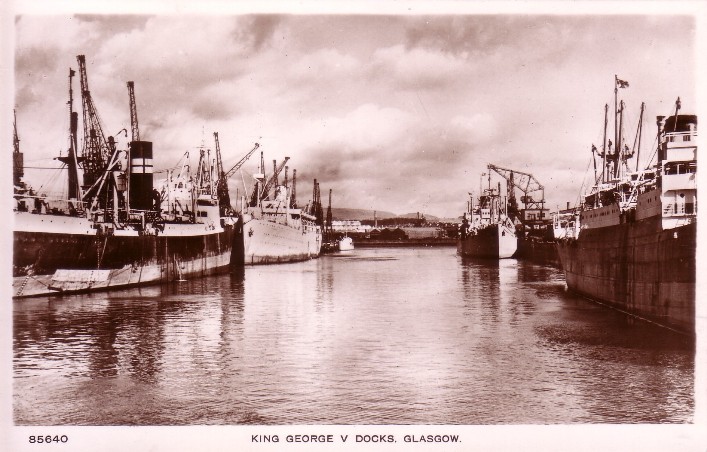
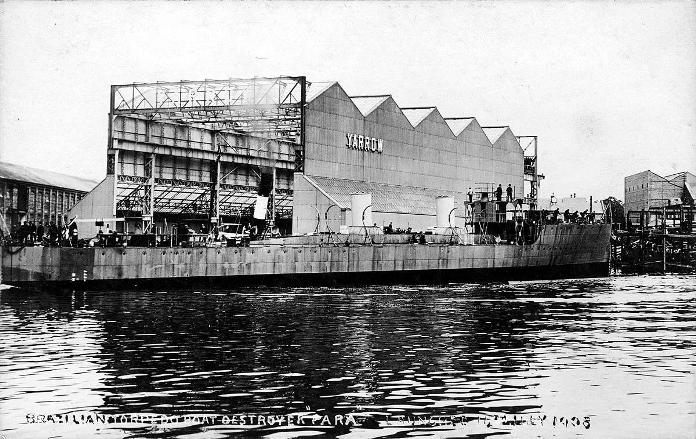
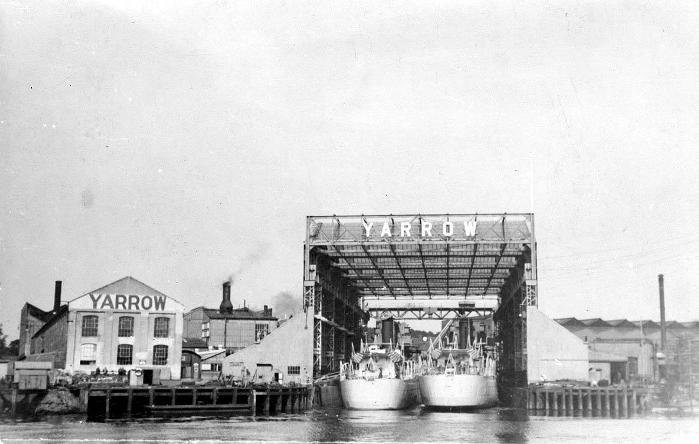
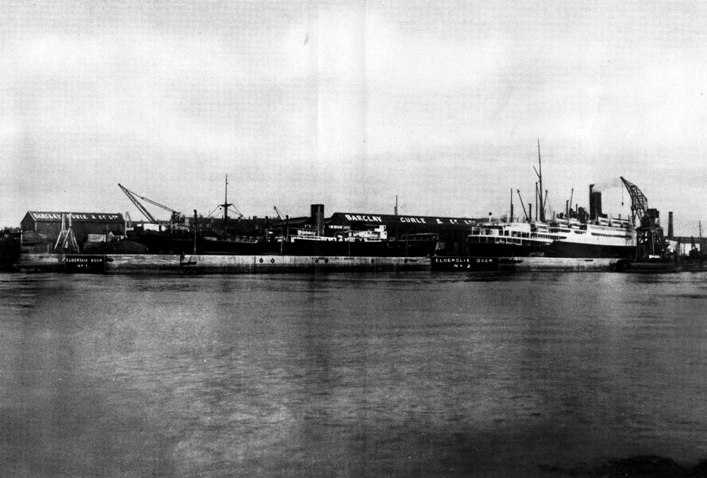
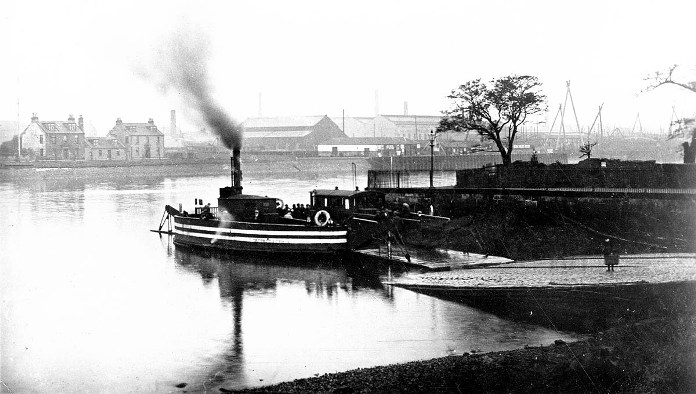
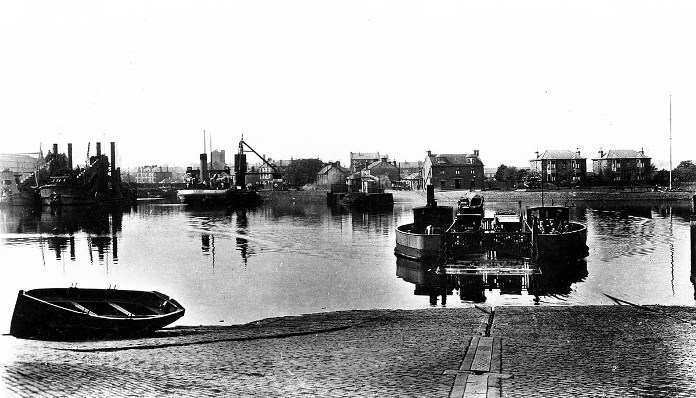
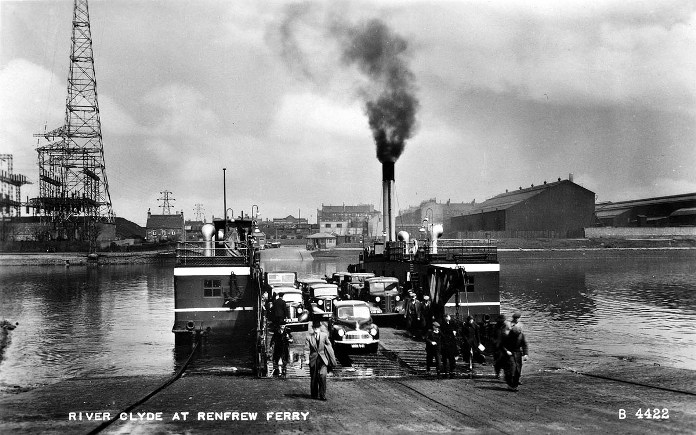
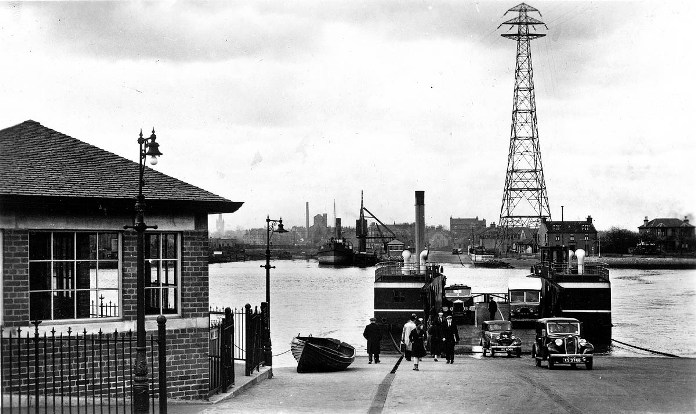
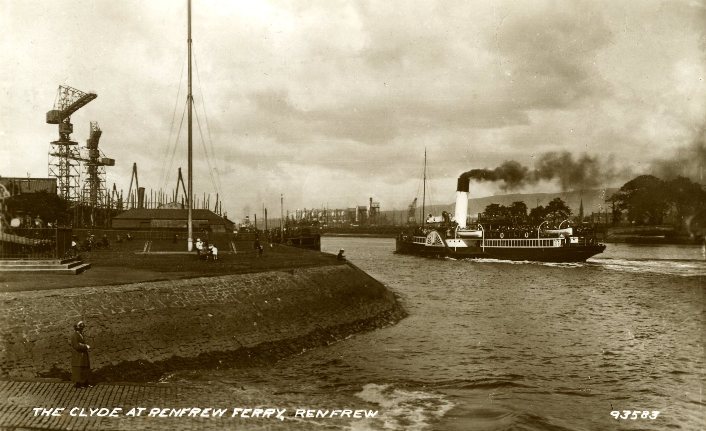
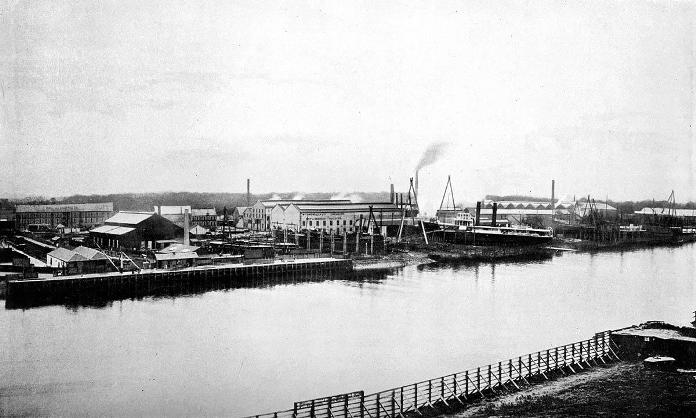
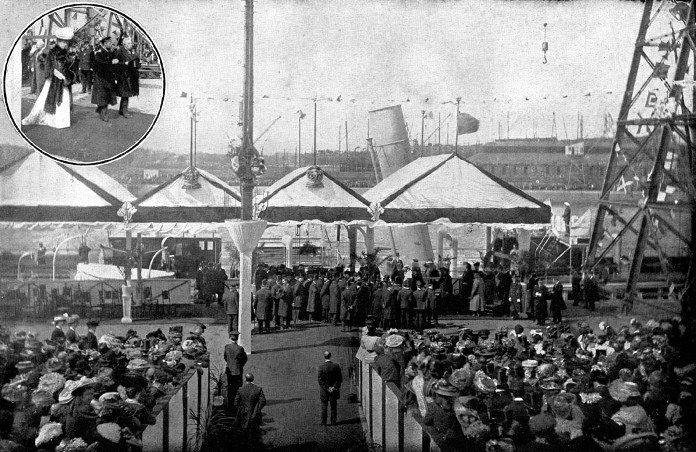
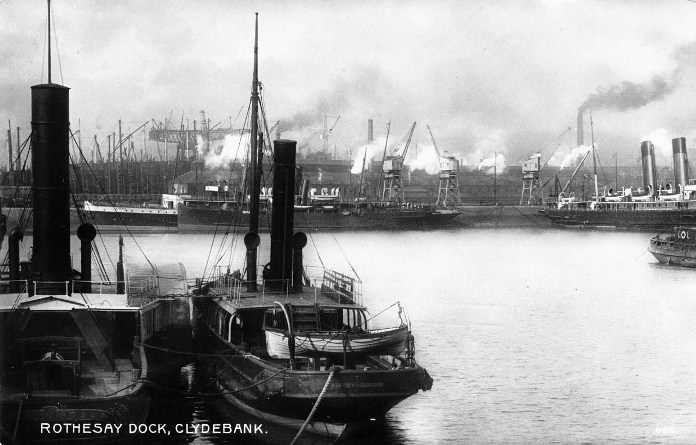
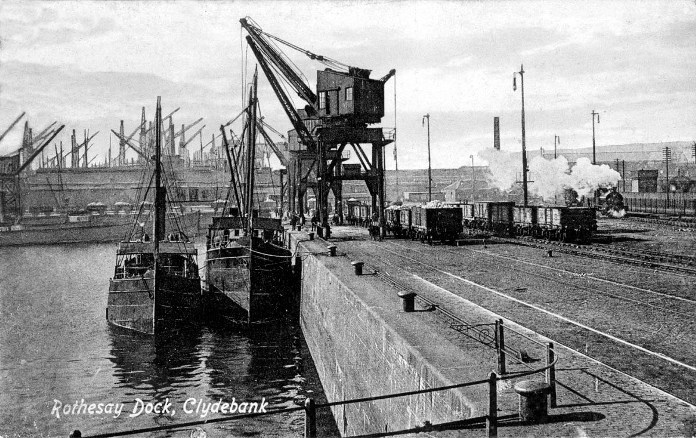
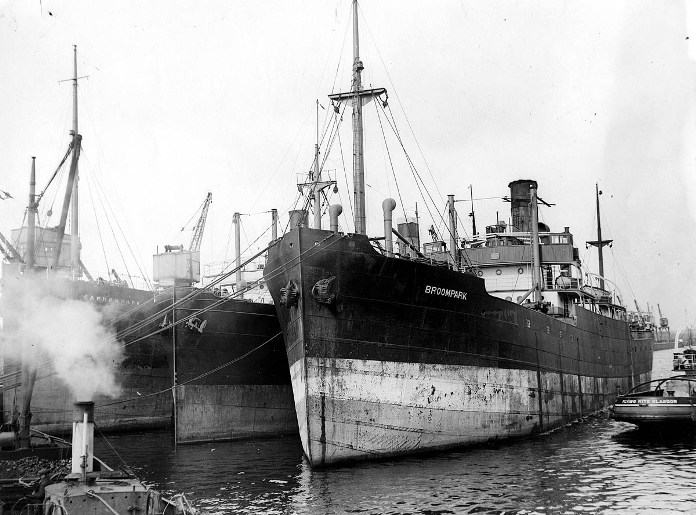
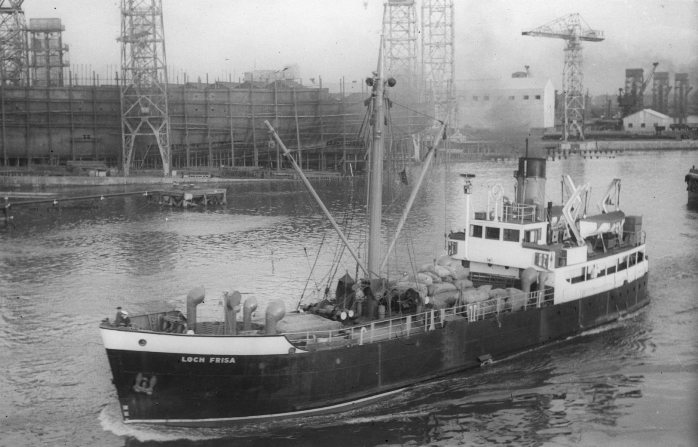
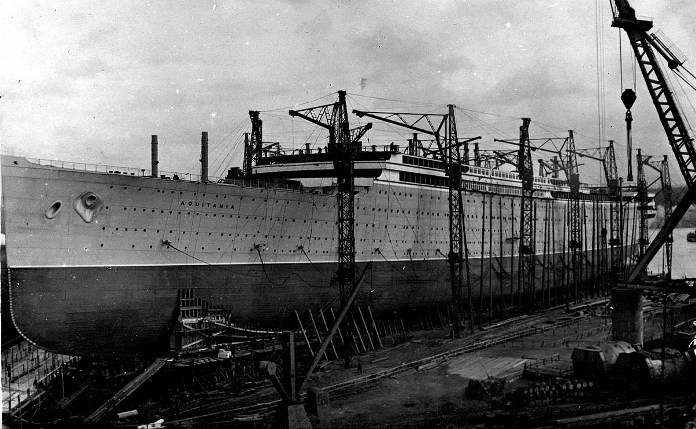
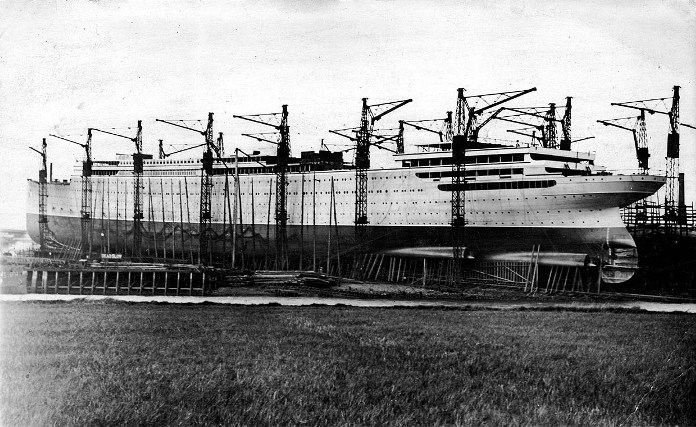
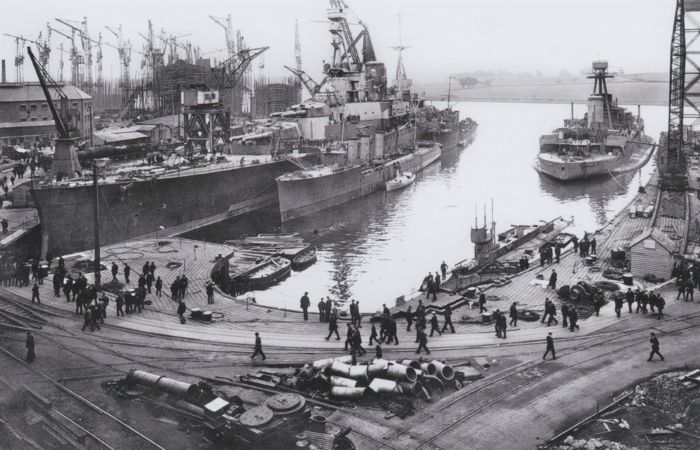
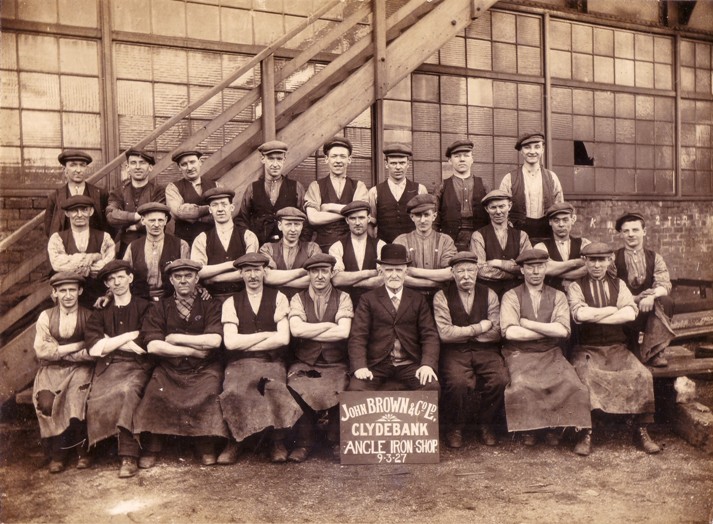
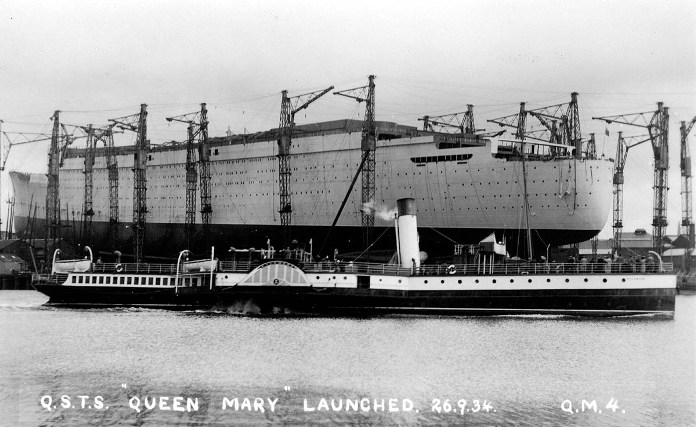
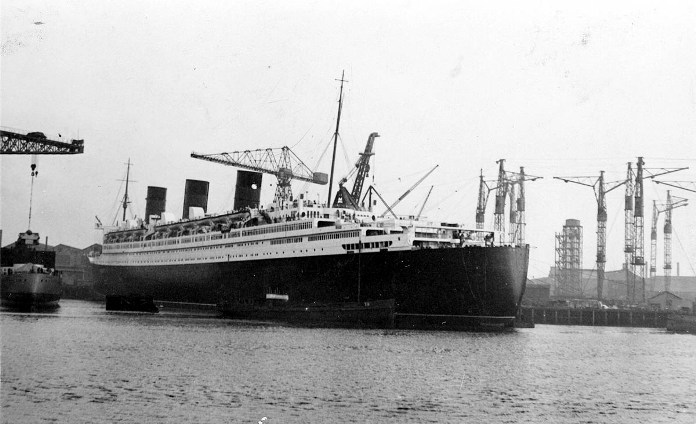
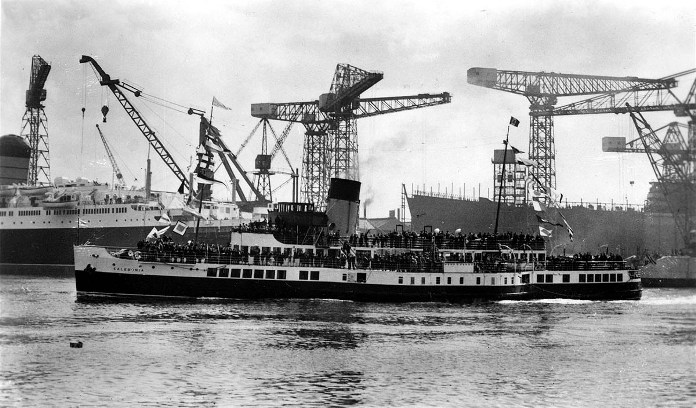
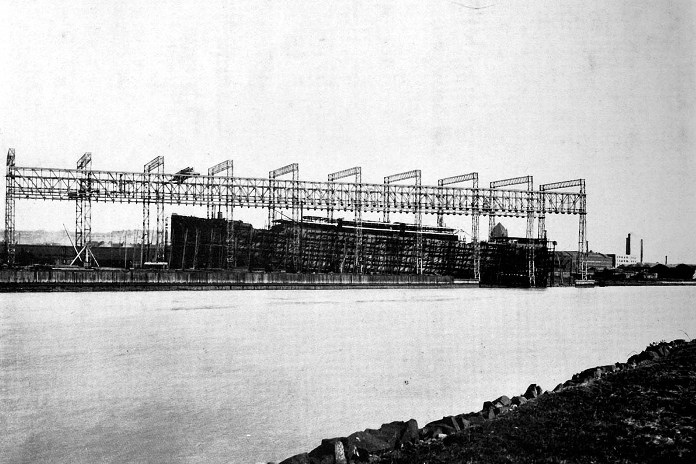
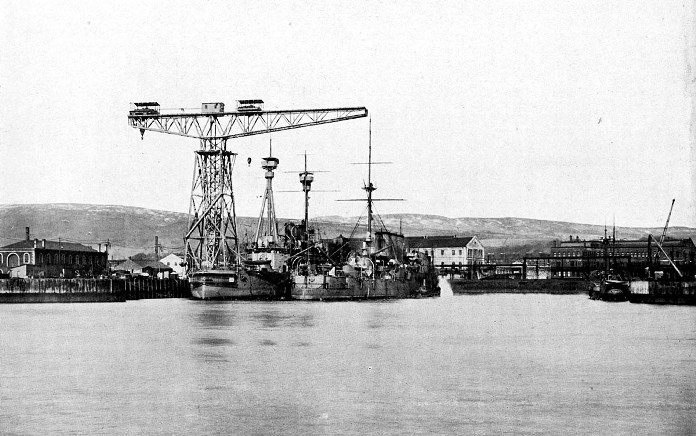
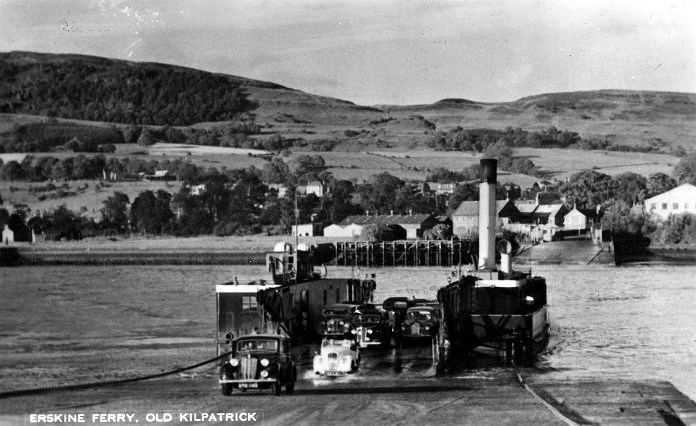
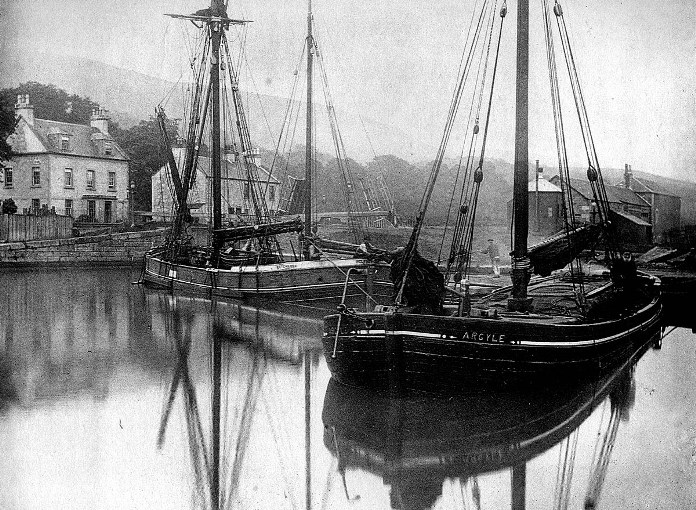
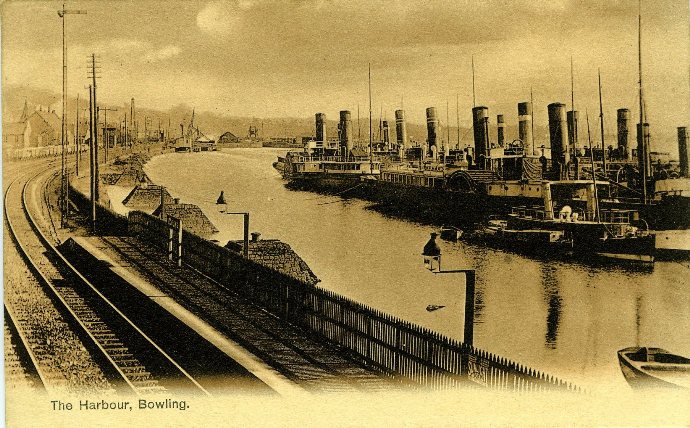
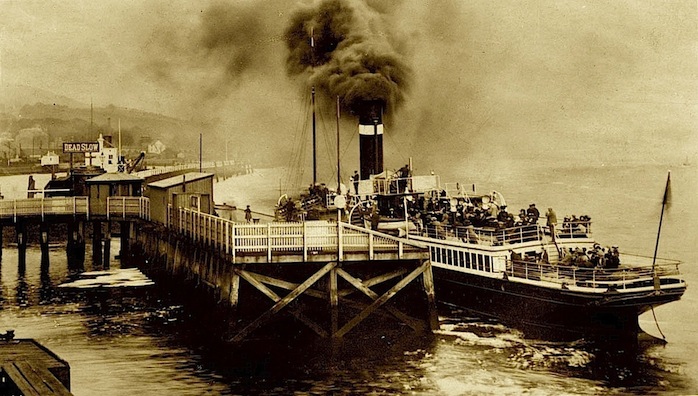
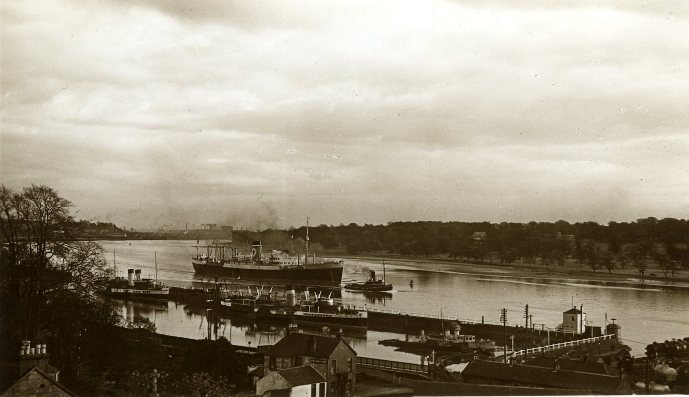
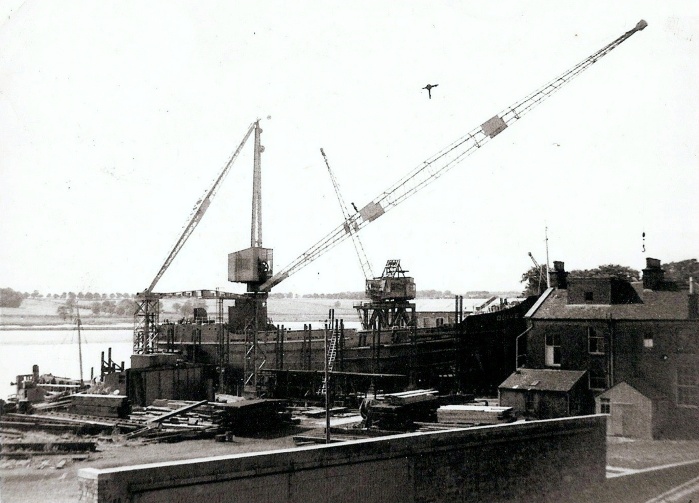
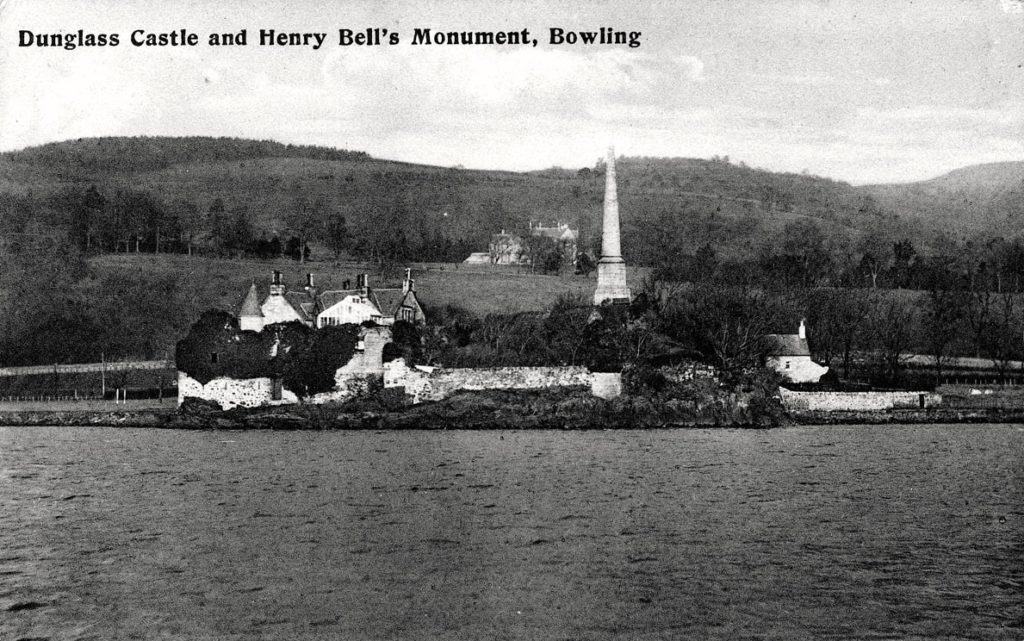
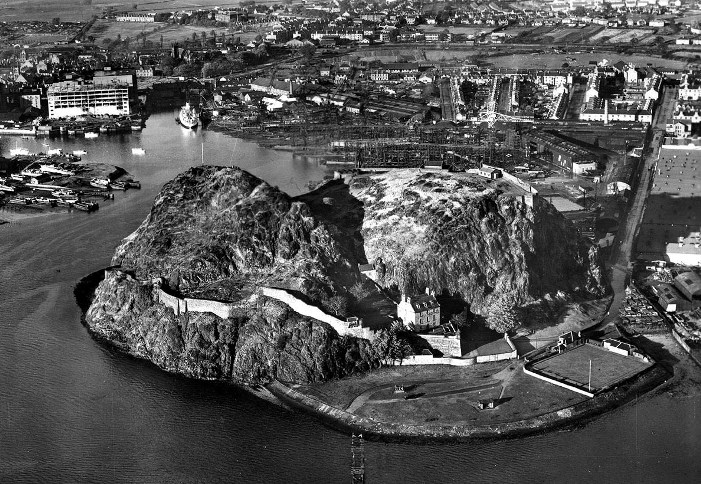
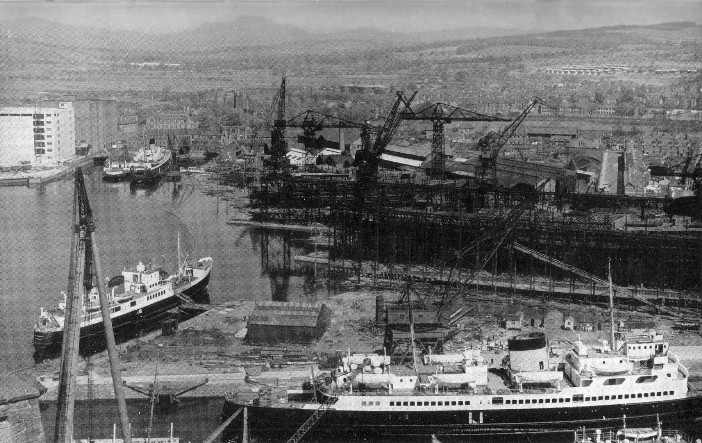
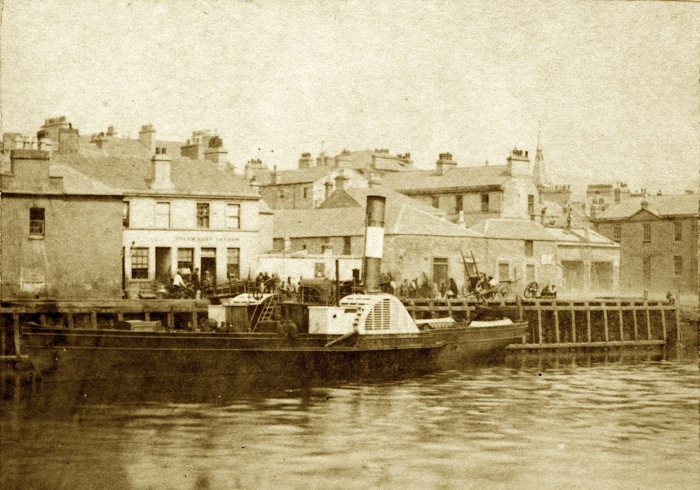
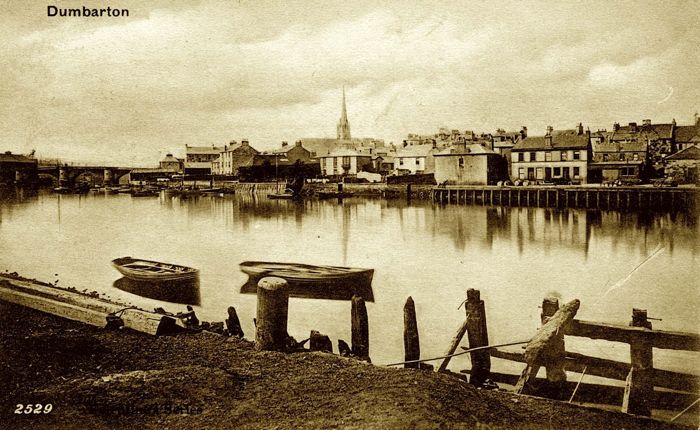
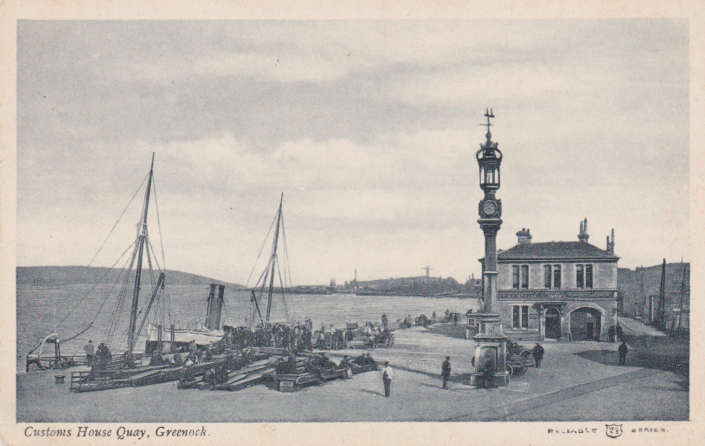

{ 31 comments… read them below or add one }
← Previous Comments
Dear Chris
Great article. Thanks.
I was wondering if I could get a copy of one of the images? The Clyde aerial view of the river and docks. I couldn’t see any copyright so I’m presuming the image is yours. Would you happen to have a high res copy?
Thank you in advance.
Maggie
Hi Chris,
I have read in my great grandfather’s (James Williamson 1813 – 1888) obituary
that his father Thomas Williamson “a man of mark in the linen and shipping trade of Belfast owned the first square rigged vessel, the Hanki, which ever went up the Clyde to Glasgow.” This would have been around 1820 I guess. I can’t find the Hanki anywhere, but I have found a ship called Hawk owned by Thomas Williamson, are you able to help?
Thank you.
Mark Williamson
Hi Mark,
Thank you very much for your inquiry and please forgive my delay in responding. I am involved in another international move. I did do a search for the vessel and also came up with nothing so I will forward your inquiry to Graham Lappin.
Best wishes,
Chris
Hello Maggie,
Thank you for your inquiry and please forgive my delay in responding. I am in the midst of another international move and everything is in boxes. This image probably came from one of my books, all of which are currently packed. I don’t think I have it as a separate postcard or photo. You could always do an online search and see if you can find an early image. I can also ask Graham Lappin if he has an aerial view of the river and docks.
Best wishes,
Chris
Dear Chris,
I am researching a painting by the Glasgow artist James Kay and executed during the latter part of the 19th century. It is of Clyde subject and I am eager to identify a more accurate location of the work. I am quite certain that it is of a ferry slipway with waiting passengers by a kiosk and on the opposite bank, plumes of smoke can be seen rising from chimneys. If you can help me, please send me an email address to which I will contact you with images and more detail of the painting. I do hope that I can look forward to hearing from you.
Neil
Hi Chris,
Very interesting website, and lovely pictures. I’m working on a TV documentary about canals, including the Forth and Clyde, and would be interested in images of ships using it when it opened in 1790. I have been unable to find contact details for Graham Lappin and would be interested to know if he might also be able to help, and whether you can suggest any other good sources of historical images of this and other British canals. Many thanks for any help you can give.
Kind regards, Val
Hello Val,
Thank you very much for you kind comments. I don’t have any images of shipping on the Forth and Clyde Canal in 1790. The world’s first photograph was reportedly taken in 1826, so you are probably referring to engravings and etchings. I will forward your message to Graham Lappin in case he can help. Have you tried contacting the National Museum of Scotland in Edinburgh and the Mitchell Library in Glasgow for information and possible early images? As for the canals of England and Wales, perhaps the local history societies of canal towns could help.
Best wishes with your project.
Chris
Dear Chris,
Thank you for posting these images. My great-grandfather and great-great-grandfather were both Clyde Pilots, so this has enriched my knowledge greatly!
I came across your site because I was looking for a photo of the workers of the John Brown’s Shipyard for a BBC2 TV documentary I’m directing. May I ask if that group image from 1927 is from your private collection?
Best regards,
Hugo Macgregor
Dear Hugo,
Thank you for your communication and for sharing your family connections with the Clyde. One of the Clyde pilots can be seen in action in the film Clyde Shipping, 1938, which is also on this website. With respect to the 1927 photograph featuring members of the Angle Iron Shop at John Brown’s Shipyard, yes I do have an original, mounted on thick grey card, probably as issued, and you are welcome to use the image.
Wishing you the best of success with your production.
Chris
Hi Chris,
Thank you for putting this together. It is a great collection and really informative.
I was wondering if you could help. I am trying to get hold of electronic copies of photos of the Clyde through the years to hang in our office. There is so much history and a lot of the activity along the river is now condensed to a few berths. It would be greatly appreciated if you could help.
Kind regards.
Charlie
Hi Charlie,
Thank you very much for your comment which is much appreciated. You are welcome to use the images from this chapter and also from the one on the Broomielaw to create photos to hang in your office. You may also wish to contact Graham Lappin who has a superb archive of historic Clyde scenes in his excellent Dalmadan website, the index of which can be found at https://www.dalmadan.com/?page_id=14
Best wishes,
Chris
Dear Chris,
What a wonderful website and many thanks for posting such a wealth of photos and information!
One correction, if I may, for a 1950s era b/w card of Glasgow Quay you have captioned as as the Greek liner NEA HELLAS, ex-TUSCANIA. The vessel shown is, in fact, either the Cunard liner SCYTHIA or SAMARIA and most likely taken at the conclusion of their post-war refits at John Brown’s in c. 1950.
I have written a history of SCYTHIA here:
https://wantedonthevoyage.blogspot.com/2020/10/
Peter
Dear Peter,
Thank you for your very kind comments and for the correction, all of which are greatly appreciated. I will make the adjustment.
Best wishes,
Chris
Hello Chris,
I am currently carrying out research for the author of a booklet on the life of Captain George Moodie, first captain of the Cutty Sark, who in 1869 supervised its construction at Linton & Scott’s yard at Dumbarton (completed by Denny’s after the liquidation of Linton & Scott). Later, Moodie was master of different ships of the State Line, e.g. State of Virginia, State of Georgia, operating from Mavisbank Quay on the Glasgow-New York run between 1873 and 1891 when State Line was acquired by the Allen Line. I am hoping that we might be able to obtain illustrations relating to any of the above. For example, I see one photo of ships at Mavisbank Quay around 1870. Can you help, please?
John
Hi Chris,
I really enjoyed reading your account of the Clyde river. Being from Waterford in Ireland, we have a strong connection with the Clyde Shipping Company. My grandfather, George Carpendale, was lost in the sinking of the S.S. Formby in Dec 1917. I just wondered if there is any new reference to this in your archives that I may not have seen or to its sister ship S.S. Coningbeg, also lost that same week. The Clyde Shipping Building in Waterford is still one of the most attractive buildings in the city.
Regards
George McDonald
https://1.bp.blogspot.com/-dParbEpqi94/WJNU57vX0lI/AAAAAAAAm0c/TOhAr3kNNXcwbew0ALb7BxYtajKx-C3IgCKgB/s1600/DSC_4390.JPG
Hello John,
Thank you for your inquiry and this fascinating information. You are certainly welcome to use any of the photographs here that illustrate the period. Soon after receiving your message, I reached out to a friend regarding your request but I have yet to receive a response. I will try contacting them again.
With best wishes,
Chris
Hi George,
Thank you for your communication and I’m sorry to learn of the loss of your grandfather in the tragic sinking of the S.S. Formby, torpedoed by U-62 on 15th December, 1917 with heavy loss of life, while returning to Waterford from Liverpool. The ship was relatively new, having been built for the Clyde Shipping Company in 1914, and was operated by the Waterford Steamship Company. Two days after the sinking of the S.S. Formby, the S.S. Coningbeg (1907) was also torpedoed by U-62, and there were no survivors. When the Formby was overdue at Waterford, an attempt was made to reach the Coningbeg by telegraph to warn it of possible submarine activity but bad weather prevented the message from getting through. There are photographs of the two ships and further details of the double tragedy on the Waterford City and County Council website: https://www.waterfordcouncil.ie/departments/culture-heritage/archives/exhibitions/shipwrecks%201914-1918/SS%20Formby%20and%20SS%20Coningbeg.htm
With respect to the Clyde Shipping Company, the archives are held by the University of Glasgow. Further information on shipping companies and steamers associated with the Clyde in the early 20th Century may be found in the excellent works by C.L.D. Duckworth and G.E. Langmuir. Their 1st Edition of “Clyde River and Other Steamers” was published in 1937.
Best wishes,
Chris
Hi Chris,
I was wondering if you have any information on the men that used to dive in the Clyde as part of the maintenance of the channels. My great grandfather from Skye apparently worked as one, possibly in the late 1800’s, early 1900’s. Just hoping to do some research for the family.
Many thanks.
Anne Copland
Hello Chris,
Thank you for some wonderful information about the Clyde on your website. I wonder of you can help with any information on the following.
My Grandfather, John Higgins, spent some time on a navy training ship moored at Dumbarton Rock. I am unable to identify the name of the ship. In 1894, when he was only 13 years old, a local dignitary of the name Forrester visited the ship. During the visit, the young daughter of Mr Forrester fell from the deck of the ship. John Higgins immediately dived into the water and rescued her, and was subsequently presented with a silver propelling pencil/pen engraved “From Irene Forrester 1894”. I have no other information about this incident but would be most grateful if you have any information relating to it.
With many thanks. Kind regards,
Stephen Higgins, Norfolk, UK
Hello Stephen,
Thank you for you kind comments and for sharing this important event in your family history. It must have been reported in the local newspaper(s) of the time. I have not been able to find any information about the incident but will pass on your request to Graham Lappin who hails from the Dumbarton area and the Vale of Leven.
Best wishes,
Chris
Hi Anne,
You raise a very interesting topic and thank you for sharing this information about your great grandfather. I expect that divers working on the Clyde through the years would either be military or civilian; Royal Navy divers or those employed by the Clyde Navigation Trust. The former would be used for naval and security operations, including the detection and destruction of unexploded bombs and aerial mines dropped during WW2, while civilian divers would be employed in keeping the channels clear of obstructions, including rocks and wrecks. An example of the latter would be the removal of the Elderslie Rock in 1886 where holes would probably have been drilled in the rock and dynamite charges inserted. Here’s the link to the finding of a diving support vessel at Newshot Island.
http://portal.historicenvironment.scot/designation/SM13692?hootPostID=7d8c9b47d5e013bf63b658ec6df5ad5c
For more information on these matters, you might wish to consult the book “Clyde Navigation: A History of the Development and Deepening of the Clyde” by John F. Riddell.
I hope this helps.
With best wishes,
Chris
Hi Neil,
Thank you for your request and I did respond by email at the time. I did not receive an email back with the images but I hope you were able to receive help in identifying the location of the scene in the painting.
Best wishes,
Chris
Dear Chris,
Many months ago, I contacted you regarding a Clyde enquiry to which I don’t think I received a reply. This may well be my error, so if I could ask you to re-send your contact details, I would like to forward you an image. Yours ever confused!
Neil
Dear Neil,
Yes, I remember your original enquiry to which I responded promptly by emailing you as you had requested. I was very keen to view the scene in your painting and to try to identify the location. Perhaps my email did not go through. We can try again.
Best wishes,
Chris
Chris,
Love the site. Great photos. My dad was a docker in the 60’s and when I was a youngster we used to play in the dock sheds chasing rats. No Playstations then. We all knew it was teatime when the steamer would come up the Clyde and berth at the bottom of our street, Centre St. The only thing I can’t find on the docks is any photos of dockers. Also as kids we would go back and forth across the river on Ferry No. 8, just for fun. No fear.
John
Hi John,
Thank you for your comment and for sharing your experience as a youngster growing up close to the Clyde when it was still a busy river. As you say, there was so much to do outdoors in an era before Playstations came along. Did you see the photos of the dockers in the section on Queen’s Dock? There is a group of them on the North Quay waiting for an assignment and there are two more seen aboard a ship further along the quayside.
Wishing you all the best John.
Chris
Hi Chris,
Would you happen to have any photos of the River Clyde/Glasgow docks, after the blitz? My uncle traveled there as part of a US Navy gun crew guarding a Liberty Ship. Probably September 1943.
Tim
Hi Tim,
Thank you for your inquiry. The City of Glasgow itself was spared the blitz and so the docks of Glasgow Harbour were not bombed. However, serious damage was inflicted to the west of Glasgow, along the Clyde at Rothesay Dock, the Town of Clydebank, and John Brown’s Shipyard, as well as other industrial sites. There were heavy civilian casualties. I don’t have any photos of the scene but you could probably find further information online. ( The Clydebank Blitz 13-15 March, 1941.)
Best wishes,
Chris
Hi Chris,
Is it possible to use the image or part therof, referred to as “General Terminus Quay” in a music video? It would form a very small part of a video to accompany the cover of a song originally written and sung by the Scottish duo Gallagher and Lyle. The end product would be on YouTube and there would be no money made from the playing of the video.
Dave
Hi Dave,
Thank you for your inquiry and you are welcome to use the image.
Best wishes,
Chris
Chris,
Thank you for your reply. As a retired photographer I am well aware of copyright issues and wanted to be sure we wouldn’t get into trouble for using it.
Many thanks.
Dave